SKILL-BUILDING EXERCISES
ACTIVITIES TO HELP IMPROVE YOUR SKILLS
SKILL BUILDING EXERCISES
Welcome to Critical Thinking Exercises
This section includes exercises that give you practice in critical thinking skills. You will find:
- Battlefield Critical Thinking Skills (BCTS) training that enables you to learn concepts and practice tactically-oriented critical thinking.
- A set of five modular exercises that give you practice in various aspects of critical thinking. Exercises include:
What is critical thinking?
According to the University of Foreign Military & Cultural Studies (UFMCS) – specialists in Red Teaming – critical thinking is a process of deliberately analyzing and evaluating how we perceive and interpret the world in order to improve understanding and decision making. Similarly, Paul and Elder describe critical thinking as “the art of analyzing and evaluating thinking with a view to improving it.” A key aspect of critical thinking is developing the ability to ‘think about thinking’ as a way of understanding our own biases, perceptions, interpretations, mental models, ways of framing problems, and worldviews. According to research conducted by the U.S. Army Research Institute (ARI) for the Behavioral and Social Sciences, critical thinking is a fundamental skill for thinking strategically. Those who are effective strategic thinkers are able to analyze elements of a situation, question assumptions, ask probing questions, understand distinctions, and evaluate evidence.
Why does critical thinking matter?
Despite our best intentions, people often think in ways that are not optimal. We jump to conclusions, make assumptions that may be erroneous, take mental shortcuts, and allow cognitive biases to cloud our judgments and decisions. Critical thinking skills such as deconstructing arguments, challenging assumptions, examining perspectives, and exploring alternatives help Army leaders avoid some errors of judgement and maximize the quality of their decision-making.
What do the excercises involve?
The critical thinking exercises available on this site provide practice with various aspects of critical thinking.
The five modular critical thinking exercises include a combination of individual and group reflection, brief tutorials, practical challenges, expert perspectives, and guidance for application. The exercises provide tools and practice related to the following:
- Deconstructing arguments
- Critiquing a belief or position
- Identifying vulnerabilities in a plan
- Thinking critically about different worldviews
- Identifying root causes for better problem solving
The Battlefield Critical Thinking Skills (BCTS) training enables you to learn about mental models and critical thinking associated with the battlefield thinking themes of purpose, time, and maneuver.
Argument Deconstruction

Welcome to Argument Deconstruction
(~3 minutes)
This exercise will give you practice in argument deconstruction, which is the thorough and systematic analysis of a persuasive position. Argument deconstruction helps you develop a better understanding of an argument by considering the issues, rationale, conclusions, evidence, and assumptions the argument contains or fails to address.
What’s the benefit of deconstructing an argument?
An argument is a set of statements, facts, or reasoning intended to establish a point of view. Arguments are typically made to convince or persuade others, but not all arguments are created equal. Deconstructing an argument helps to peel back the layers and determine if value conflicts, statistical errors, false assumptions, and/or erroneous conclusions exist in that argument. Applying this approach isn’t solely beneficial when considering others’ positions; it is also a valuable exercise to conduct with your own arguments. It can help you uncover weaknesses and strengthen the argument or case you are making.

Reflect: What makes argument deconstruction difficult?
(~5 minutes)
Take a moment to reflect on the prompts below. Capture your responses in the text field.
- When are you presented with arguments and opinions in the context of your work?
- How do you evaluate the value and credibility of an argument?
- What is the most difficult part of deconstructing an argument?
| Enter text here |
Now that you have finished your reflection, you can click Expert Response to see what experts say about common challenges relating to deconstructing an argument. Did you identify any of the same challenges?
Deconstructing arguments can be challenging for several reasons:
- Arguments can be skillfully hidden and presented as fact. It requires strong critical thinking skills to spot weak or distorted evidence, fallacies, and unwarranted assumptions.
- It can be particularly difficult to deconstruct and see weaknesses in an argument that aligns with one’s own beliefs, values, and opinions.
As with any skill, practice and reflection will enhance your ability to understand a different perspective more deeply.
An Example
(~3 minutes)
Let’s look at an example.
Imagine that your friend shares a post on social media that states that ‘vaccines are dangerous, and that people should not take them.’ The post says that ‘vaccines contain harmful chemicals that can cause autism in infants, and they can make adults very sick.’ She also shared an article to support her point.
As a new parent, this information is troubling to you, and you are concerned for your friend who posted this information. You decide to deconstruct your friend’s argument to get to the bottom of it.
To begin, you identify these core aspects of the argument:
| Issue | Whether to get vaccinated |
|---|---|
| Position | You should not get your children or yourself vaccinated. |
| Argument(s) | Vaccinations contain harmful chemicals that can cause autism in infants and can cause serious illness in adults. |
| Evidence | A single published article. |
Then you continue the process of deconstructing the argument by considering the following reflection prompts:
| What are the characteristics of the evidence provided? |
|
|---|---|
| What evidence is omitted? |
|
| What is a potential counterargument? |
|
By deconstructing this argument, you are better able to understand your friend’s argument and stop the spread of disinformation on social media.

Take the challenge
(~10 - 15 minutes)
It's time to practice deconstructing an argument.
Your challenge is this
First, read the following persuasive article about the Pentagon.
Then, use the argument deconstruction framework to understand this person’s position and arguments.
Close the Pentagon — it’s too big of a target
Source: James Hasik, Defense News, August 31, 2020
In 2001, an attack against one of the five sides of the Pentagon killed 125 and forced a partial evacuation. The Defense Department showed impressive resilience: Even as one side of the building collapsed, its command center kept functioning. Conflict yet continues, in part because al-Qaida has few fixed targets to destroy. Thus, for three decades, America’s wars have seemed either drive-by shootings or questionable quagmires. The next war that matters may be neither.
In 2001, finding the Pentagon at 500 knots may have been challenging for the suicide pilot, but not today for a cruise missile. In 2019, half of Saudi Arabia’s oil refining was temporarily incapacitated by a barrage of just two dozen Iranian missiles. More ominous was the total failure of the kingdom’s air defenses to defend against or even detect the attack before the first impact.
In early 2020, the present pandemic forced a more thorough evacuation. The Pentagon’s command center has functioned, but most other activities have moved offsite, and substantially to private homes. Around the military and its contractors, remote work has expanded tenfold, to about 1 million people. Defense Secretary Mark Esper has expressed surprise at how well the arrangement has been working. Peter Ranks, his deputy chief information officer, says that productivity has not suffered.
This matches a broader reality. About half the American workforce is working remotely, and remote work is becoming permanent.
For the military today, reading secrets still generally requires a trip to a mostly empty office. However, the U.S. Air Force and Defense Information Systems Agency have initiated pilot programs to conduct even classified work remotely. Information security remains vexing, but unless the Defense Department wants to rely entirely on couriers, its cyber vulnerabilities will require intense attention anyway.
Retired Adm. James Stavridis recently wrote of the value of physical proximity, as “we cannot ‘Zoom’ trust.” The safety of social distancing can lead, he argued, to the disconnection of real social distance. That sounds bad, but many people have been working remotely for much of the past 20 years with manageable difficulties. As more of the world chooses to go remote, managers and social scientists will learn yet more about how to do it right.
Indeed, these difficulties must be managed because the alternative is frightening.
Today, Russia and China have masses of cruise missiles, dozens of submarines for launching them and global navigation satellite systems for guiding them. Attacking fixed targets is first a matter of mission planning, and the entire world has been thoroughly mapped. It is second a matter of avoiding air defenses, and of this there is little around North America. In that context, contemplate the possibility of not a singular attack upon the Pentagon, but one with dozens of missiles slamming into all fives sides, and down through the “bullseye” center court.
In private conversations, former defense officials keep reminding me that our war-fighting systems are too dependent on highly concentrated and easily located airfields, ports, depots and command centers. In contrast, America’s adversaries are either going mobile or deeply burying facilities. The Pentagon is neither mobile nor deeply buried.
So why have a Pentagon at all? Why maintain that highly concentrated target?
It’s certainly not for recruiting and retention. In closing the Pentagon, the military could stop rotating staff officers in and out of northern Virginia. Remote work from current stations would remove the disruptions of yet another change of station, particularly late in careers when officers’ children are often advancing through high school.
It’s also not for better decision-making. In his valedictory complaint in Wired, John Kroger, the Navy’s recently departed chief of learning, described the Pentagon as “a threat to national security.” With its concentrated culture of scripted updates, hostility to analysis and mid-century office technologies, “The Building” is much of the problem. Emptying it permanently could help multiple, and hopefully better, military cultures flourish.
What would we do with an empty Pentagon? We have options. Arlington National Cemetery is running out of space. Perhaps a professional sports team will eventually want a centrally located venue. Northern Virginia could always use another park. What really matters is dispersing that concentration of leadership beyond one building in northern Virginia, lest we someday lose it all at once.
James Hasik is a senior research fellow at the Center for Government Contracting at George Mason University, and a senior fellow at the Scowcroft Center on Security and Strategy at The Atlantic Council.
Now that you’ve finished reading the article, spend a few minutes answering some initial questions about the argument offered in the piece you read.
- Issue: What is the topic or decision under consideration?
- Position: What is the position or opinion presented?
- Argument(s): What argument is the author making?
- Evidence: What evidence or information does the author offer in support of the argument? For example: research studies, statistics, testimonials, anecdotes and case examples, personal experience.
Capture each of those components in the text fields below.
| Issue |
|
|
|---|---|---|
| Position |
|
|
| Argument(s) |
|
|
| Evidence |
|
When you have described the component parts, spend a few minutes reflecting on the following -
- Point of view: How would you describe the author’s point of view?
- Assumptions: What assumptions does the author make?
- Questions raised: What does the author raise as key questions that need to be addressed?
- Available evidence: What evidence or information does the author offer in support of the argument? For example: research studies, statistics, testimonials, anecdotes and case examples, personal experience.
- Missing evidence: Is there evidence or information that is missing? Data that you would expect but isn’t provided?
- Alternative interpretation: Is the evidence/information provided open to different interpretation and/or conclusion?
Enter your responses in the text field below:
| Author’s point of view |
|
|
|---|---|---|
| Author’s assumptions |
|
|
| Questions raised |
|
|
| Missing evidence |
|
|
| Alternative interpretations |
|
Based on this analysis, what could make this argument stronger?
Enter your responses in the text field below:
| Enter text here |

Reflect on the exercise
(~5 minutes)
Now that you’ve had a chance to deconstruct an argument it’s time to think about the experience of thinking critically about an argument or opinion. Consider the following questions and capture your responses in the text field below.
- What aspects of the opinion piece do you see differently now?
- What have you learned or become aware of that hadn’t occurred to you before?
- In what ways do you see argument deconstruction as being useful when you are expressing a point of view or hope to persuade someone?
| Enter text here |
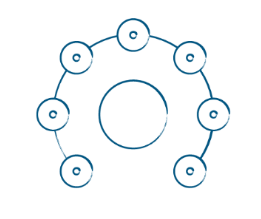
Meet with your peers
(~20 minutes)
Get together with a peer group to share your responses to the Argument Deconstruction exercise and some of the insights you gained. After each person shares their responses and insights, discuss the following questions as a group:
- What have you gained from deconstructing an argument?
- Think about the different aspects of the argument (issue, position, argument(s), evidence) you considered. How is breaking the argument down in this way helpful?
- In what ways do you anticipate using argument deconstruction in your daily operations?
Additional practice with argument deconstruction
Select and view one of the following videos of your choice.
The Military Case for Sharing Knowledge
(Stanley McChrystal; ~6 minutes)
A New Mission for Veterans
(Jake Wood, ~ 4 minutes)
Behind China’s Influence in Africa
(Council on Foreign relations; ~2 minutes)
Complete the deconstruction process with the argument made in the video. Use the framework below to help you.
- Issue: What is the topic or decision under consideration?
- Position: What is the position or opinion presented?
- Argument(s): What argument is the presenter making?
- Evidence: What evidence or information does the presenter offer in support of the argument? For example: research studies, statistics, testimonials, anecdotes and case examples, personal experience.
Capture each of those components in the text fields below.
| Argument Component | Your Summary of the Component | |
|---|---|---|
| Issue |
|
|
| Position |
|
|
| Argument(s) |
|
|
| Evidence |
|
When you have described the component parts, spend a few minutes reflecting on the following -
- Point of view: How would you describe the author’s point of view?
- Assumptions: What assumptions does the author make?
- Questions raised: What does the author raise as key questions that need to be addressed?
- Missing information: Are there factors or pieces of information that strike you as important that the author fails to acknowledge?
- Missing evidence: Is there evidence or information that is missing? Data that you would expect but isn’t provided?
- Interpretation: Is the evidence/information provided open to different interpretation and/or conclusion?
Enter your responses in the text field below:
| Presenter’s point of view |
|
|
|---|---|---|
| Presenter’s assumptions |
|
|
| Questions raised |
|
|
| Missing evidence |
|
|
| Alternative interpretations |
|
Based on this analysis, what could make this argument stronger?
Enter your responses in the text field below:
| Enter text here |
Now, share your argument deconstruction with a peer or mentor.
Ask your peer or mentor to challenge your thinking as you share your deconstruction framework with them.
When you’ve finished this activity, click Finished.
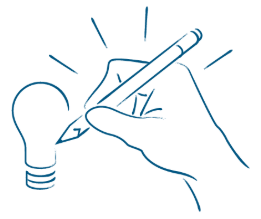
Put your argument deconstruction skills to work
(~10 minutes)
Now, it’s time to try out argument deconstructions in your work.
In this activity, you will reflect on a debate or difference of opinion that you have experienced at work, school, or your personal life.
Here’s what to do:
- Identify the issue or topic at the center of the debate, and the reasons and conclusion from your point of view.
- Once you’ve identified these aspects, consider the evidence you have brought to the topic, your assumptions, and how well they support your conclusion.
- Reflect on ways to make your point of view clearer, more logical, and more credible.
- Capture your insights in the text field below or in your notebook.
| Enter text here |
Devil’s Advocacy

Welcome to Devil’s Advocacy
(~3 minutes)
This exercise will give you practice in challenging a fundamental belief or strongly-held view. You will practice building a case for an alternative explanation that opposes a stated position.
What's the benefit of challenging a strongly-held view?
When solving problems and creating plans, we sometimes form a view or take a position prematurely, without first considering alternative perspectives. We often fall prey to confirmation bias. Confirmation bias is the tendency to favor information and ideas that confirm or justify our existing beliefs and to minimize evidence that might contradict those beliefs. For example, if we believe that GE appliances are the best made and most reliable appliances on the market, we may look for and see only customer testimonials that confirm this. We may overlook, dismiss, or give less weight to any consumer claims to the contrary.
Taking on the perspective of the “devil’s advocate” can help to counter confirmation bias. Playing the “devil’s advocate” involves intentionally taking a different perspective or minority point of view, even if you do not necessarily agree with that view. It helps to expose implicit assumptions or faulty reasoning, particularly when beliefs or assertions have been made hastily (e.g., when your team may have “jumped to conclusions”), and to consider how a different set of assumptions might lead to a different view or belief. It also helps illuminate evidence that was either intentionally or unintentionally disregarded or ignored in the first place.

Reflect: What makes it hard to challenge beliefs or views?
(~5 minutes)
|
Take a moment to reflect on the prompt below. Capture your responses in the text field below.
|
|---|
| Enter text here |
Now that you’ve finished your reflection, you can click Expert Response to see what experts say is difficult about challenging deeply held assumptions and beliefs. Did you identify any of the same difficulties?
Questioning assumptions and challenging a strongly held view can be difficult for several reasons:
- When we solve problems, it’s common to fall prey to confirmation bias as described above. [Click here to learn more about confirmation bias].
- We tend to perceive what we expect to perceive.
- We tend to value information that is consistent with our views and reject or overlook information that is not.
- We can easily become wedded to a pre-existing plan, perspective, person’s reputation, etc., which keeps us from thinking critically about that plan, perspective, person, etc.
- We often do not stop to consider what assumptions we are making and why. Questioning assumptions starts with realizing you are, in fact, making an assumption.

Take the challenge
(~5 - 10 minutes)
It’s time to practice playing the devil’s advocate.
Your challenge is this:
Think about a position that your unit, your class, your team, or your family is taking right now, along with the reasons for that position. It can be an underlying position that is rarely discussed or questioned. It can also be a position you have reached, relevant to a selected course of action.
A few examples of positions to help spur your thinking include:
- “The U.S. Federal Government should not directly fund private schools.”
- “Florida is the best place for a family vacation.”
- “National service should be mandatory.”
- “Co-ed schools offer a superior educational environment.”
- “Senior military leaders should refrain from voting in presidential elections."
An example of the reasons for a belief or position would be:
“Florida is the best place for a family vacation because….
Once you’ve thought of a position your unit, class, team, or family is currently taking, capture that position – and the reasons for it - in the text field below. |
|---|
| Enter text here |
|
Now, state an opposing position. For example, the positions noted above in their opposite form are:
For the position you noted above, state the opposing position in the text field below. |
|---|
| Enter text here |
|
Next, spend approximately 5 minutes considering the reasons why the opposing position is valid. Capture your reasons in the text field below.
|
|---|
| Enter text here |
Critique the original position
(~5 - 10 minutes)
Now your challenge is to assess and critique the original belief or position you chose to work with in the previous challenge.
Consider and document in the text field below:
- Weakest points in your original stated position.
- Information or considerations in the original stated position that may have been overlooked.
- Information or considerations that are missing from the original stated position.
- Any implicit assumptions upon which the original stated position rests.
| Weakest points in terms of reasoning |
|
|
|---|---|---|
| Overlooked information |
|
|
| Missing information or considerations |
|
|
| Implicit Assumptions |
|
Revise your position
(~5 minutes)
|
You’ve now had a chance to state a position, take an opposing view of that position, and critique that position.
Capture your response in the text box below. |
|---|
| Enter text here |
Reflect on the exercise
(~5 minutes)
|
Now that you’ve had a chance to challenge a belief, it’s time to think about your experience doing so. Consider the following questions and capture your responses in the text field below.
Enter your reflections in the text field: |
|---|
| Enter text here |
Ask a mentor or peer
(~10 - 15 minutes)
|
There is much to learn from others.
|
|---|
| Enter text here |
|
Now, ask your mentor or peer to share with you an example from their own lived experience when they challenged an underlying belief or position within their unit, planning team, or classroom. Solicit their reflections on the following:
Capture what you learn from the conversation in the text field below or in a notebook for future reference. |
|---|
| Enter text here |

Put your devil's advocacy skill to work
(~10 minutes)
Now, it’s time to try out your devil’s advocacy skills in your work.
In this activity, you will apply the devil’s advocacy approach. Here’s what to do:
- In your next unit planning exercise or classroom discussion, take on the role of devil’s advocate to help the team arrive at its plan or decision. (Note: Depending on the climate of your unit or classroom, you may want to discuss this with your leader ahead of time to ensure their support).
- As the team is discussing the plan, take note of a stated position or implicit belief underlying the discussion or plan.
- In your head or in a notebook, restate the position or belief in its opposing form, along with the reasons the opposing position or belief is true.
- Jot down any weak, missing, or overlooked information or reasoning from the originally stated position.
- Share the opposing view and reasoning with your team. As you present the information, you may want to start by explicitly stating: “I’m going to play devil’s advocate for a moment…”
|
Following this experience, reflect individually or with a peer on what happened when you shared the opposing point of view.
Capture any lessons-learned in the text field below or in your notebook. |
|---|
| Enter text here |
4 Ways of Seeing

Welcome to 4 Ways of Seeing
(~3 minutes)
This exercise will give you practice in considering different perspectives, assumptions, and motivations of different entities (e.g., people, groups, organizations, nations). You will also practice identifying potential misunderstandings and leverage points for working most productively with different entities.
Intentionally considering multiple perspectives, including your own, can help you identify sources of potential misunderstanding and conflict. By better understanding how others with opposing views see the world (including their values, motivations, and needs), you can better understand the nature of the disagreement and generate mutually beneficial solutions to resolve conflict.

Reflect: The challenge of considering multiple perspectives
(~5 minutes)
|
Take a moment to reflect on the prompts below. Capture your responses in the text field below.
|
|---|
| Enter text here |
Now that you’ve finished your reflection, click Expert Response to see what experts say about common challenges relating to perspective-taking. Did you identify any of the same challenges?
Considering multiple perspectives can be challenging for several reasons:
- We all have biases. Putting aside our own assumptions, attitudes, and beliefs can be a significant challenge.
- Recognizing differing views is only a first step. Appreciating the other perspective and the key factors that influence it is an even greater challenge.
- Cultural attitudes, beliefs, and ways of thinking heavily influence our perspectives and understanding. It may be especially difficult to take on the perspective of someone else whose culture is completely outside of your own cultural norms.
As with any skill, practice and reflection will enhance your ability to understand a different perspective more deeply.
Get warmed up: Consider an example
(~3 minutes)
Let’s explore an example of two groups with different perspectives.
Imagine you are comparing the perspective of traditional gas car owners versus electric car owners. To conduct the 4 Ways of Seeing exercise, you would consider the following:
- How A views itself: How traditional gas car owners view themselves
- How B views itself: How electric car owners view themselves
- How A views B: How traditional gas car owners view electric car owners
- How B views A: How electric car owners view traditional gas car owners
Now, take a look at the 2x2 grid that follows to see a simple illustration of the 4 Ways of Seeing approach, capturing views of traditional car owners and electric car owners:
How gas car owners view themselves:
- Traditional in terms of car selection
- Supportive of fossil fuel industry
- Wants a cheaper car up front
- Accepts regular maintenance as part of car ownership
- Likes to stick with what they are familiar with
- Finds electric vehicles uncertain
How gas car owners view electric car owners:
- Not practical
- Snobs
- Risk takers
How electric car owners view themselves:
- Environmentally conscious
- Unsupportive of fossil fuel industry
- Willing to pay more up front
- Likes saving on maintenance
- Sees car as status symbol
- Enjoys the responsiveness/immediate acceleration
- Fun to drive
How electric car owners view gas car owners:
- Not environmentally conscious
- Short-sighted/Narrow-minded
- Rigidly old-fashioned
Of course, we’re making some generalizations here to illustrate the 4 Ways of Seeing skill. But this framework can be a useful tool as you practice perspective-taking.
Practice considering multiple perspectives
(~5 minutes)
Now, you will get an opportunity to try out the 4 Ways of Seeing approach.
Imagine you’ve been tasked with understanding the differing perspectives between the United States and Iran with respect to their role in global security. Spend some time researching these two perspectives online, and then fill in the chart below.
|
US View of its own role How does the US view itself? |
|---|
| Enter text here |
|
US View of Iran’s role How does Iran views itself? |
|---|
| Enter text here |
|
Iran’s View of its own role How does the US view Iran? |
|---|
| Enter text here |
|
Iran’s View of the US role How does Iran view the US? |
|---|
| Enter text here |
How do your responses to this exercise compare to what experts identified for each perspective? What do you have in common with the experts? What aspects of each perspective did you miss?
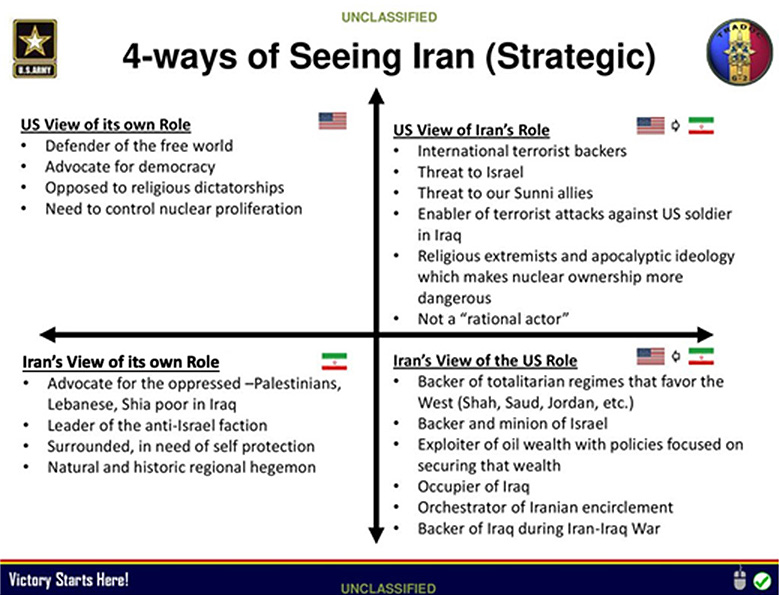
Source: https://www.google.com/search?q=four+ways+of+seeing+army&source=lnms&tbm=isch&sa=X&ved=2ahUKEwjmrPXursPrAhXVKs0KHcH9Cg0Q_AUoAnoECAwQBA&biw=1536&bih=694#imgrc=2TYEluZmXKJmZM
Important to note is that when dealing with complex problems, we are typically considering more than two entities. As you use this framework, you can add additional entities to consider the differing perspectives, beliefs, values, and motivations of multiple entities.
Once you’ve completed your comparison, click Finished.
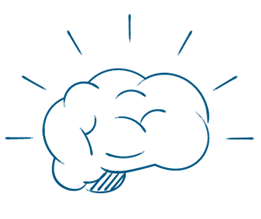
Take the challenge
(~10 - 15 minutes)
Now that you have seen an example and practiced the 4 Ways of Seeing exercise, read the following scenario and apply the 4 Ways of Seeing approach to the situation.
Scenario:
The debate between the efficacy of public versus charter schools in US K-12 education is ongoing. Proponents of charter school education cite that parents should have the opportunity to choose where their children go to school, and states should be willing to fund those choices. They do not believe that their children should be limited to the quality of the school based on the school district where they physically live. They see the alternative education experiences their children receive in charter schools as superior to the education their child might receive in the public school system. Since charter schools are not heavily regulated, charter schools are often able to employ alternative or innovative approaches to education that might not be possible within the heavily regulated confines of the public school system.
Proponents of public education believe that funneling funds away from public schools to fund charter schools is harmful to school districts who desperately need that funding from states and provides an insufficient education to students who attend charter schools. Public school proponents believe that charter school students often ‘slip through the cracks’ and special needs might be entirely missed altogether. Fewer resources mean that the charter schools lack the support structures and services that public schools provide. When charter school students re-enter the public school system (and they frequently do), public school teachers often find that the students are not meeting the state standards for their grade level, and do not have the skill development or breadth of experience that their public school counterparts have had. Instead, public school teachers often need to ‘catch up’ the charter school students to try to help them get up to speed to the public education standards. Many stories of poorly regulated charter schools and misappropriated funds leave public school advocates frustrated with their states for shielding and enabling charter schools to provide sub-par educations to their students.
Your challenge is this:
Now, spend 10-15 minutes reflecting on the four quadrants in the table below. Fill them in one at a time. Use the prompts below, but don’t feel limited to these.
Starter Questions
- How does each side view the situation?
- What perspective does each hold about public versus charter schools?
- What beliefs might be driving the behavior of each side?
Capture your responses in the four quadrants below.
|
Group A: Public School Advocates How public school advocates view themselves |
|---|
| Enter text here |
|
Group B: Charter School Advocates How public school advocates view charter school advocates |
|---|
| Enter text here |
|
How charter school advocates view themselves |
|---|
| Enter text here |
|
How charter school advocates view public school advocates |
|---|
| Enter text here |
When you have filled in all four quadrants, take a few minutes to reflect on the following:
- What are some commonalities between the two groups?
- What are some differences between them?
- Are there consistent areas of conflict between them?
- Are there topics or issues where they agree?
- Where might there be misunderstandings between them?
Enter your responses in the text field below:
| Things they have in common: |
|---|
| Enter text here |
| Ways they are different: |
|---|
| Enter text here |
| Areas of conflict: |
|---|
| Enter text here |
| Areas of agreement: |
|---|
| Enter text here |
| Possible misunderstandings: |
|---|
| Enter text here |
|
Based on your analysis, identify 2-3 actions that might decrease discord and improve relations between them.
|
|---|
| Enter text here |

Reflect on the exercise
(~5 minutes)
Now that you’ve had a couple chances to compare and contrast the perspectives of two entities, it’s time to think about the experience of considering multiple perspectives. Consider the following questions and capture your responses in the text field below.
|
|---|
| Enter text here |

Meet with your peers
(~20 minutes)
Get together with a peer group to share your responses to the 4 Ways of Seeing exercise and some of the insights you gained. After each person shares their responses and insights, discuss the following questions as a group:
- What have you gained from considering different perspectives?
- Think about the different types of questions considered. How might different types of questions contribute to deeper insights?
- In what ways do you anticipate using 4 Ways of Seeing in your daily work?
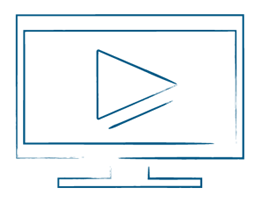
A personal reflection
(~5 minutes)
A slightly different use for the 4 Ways of Seeing technique is applying it to understand, contrast, and compare your own perspective and that of another person or group you need to work with. The goal is to help you identify ways to close the gaps between your perspective and theirs to improve your ability to align and work more effectively.
Similar to what you’ve done previously, you create four quadrants. And label them as follows:
|
HOW YOU SEE YOURSELF |
|---|
| Enter text here |
|
HOW YOU SEE THEM |
|---|
| Enter text here |
|
HOW THEY SEE THEMSELVES |
|---|
| Enter text here |
|
HOW THEY SEE YOU |
|---|
| Enter text here |
You can fill in these quadrants for yourself and the other group. Then consider these key questions:
- How much of what you’ve written is based upon assumptions as opposed to real knowledge?
- How can you close the gaps between the way you see the situation, and how the other group sees it?
- What opportunities do you see for working together more effectively with the other entity, despite the differences in perspective?
If you prefer, you can watch this short video for guidance on how to use 4 ways as a personal reflection tool.
Ask a mentor
(~10 - 15 minutes)
Mentors have the wisdom of experience and can help you expand your thinking.
Your next challenge is this:
Identify a mentor or other leader you respect. Ask them to share with you:
- How they consider multiple perspective in their daily work
- Some tips for incorporating perspective-taking into your day-to-day activities
Jot those tips in a notebook for future reference.

Put your perspective-taking skills to work
(~10 minutes)
Now, it’s time to try out considering multiple perspectives in your work.
In this activity, you will reflect on an experience at work, school, or your personal life.
Here’s what to do:
- Identify an issue or topic that you want to understand more deeply, and the two perspective/groups involved in the issue that you are familiar with.
- Once you’ve identified the topic and the perspectives at play, complete the four quadrants chart below to practice considering multiple perspectives.
Group A:
|
How Group A views itself: |
|---|
| Enter text here |
Group B:
|
How Group A views Group B: |
|---|
| Enter text here |
|
How Group B views itself: |
|---|
| Enter text here |
|
How Group B views Group A: |
|---|
| Enter text here |
|
|---|
| Enter text here |
Use additional scenarios to gain more practice with the 4 Ways of Seeing approach.
Alternative Scenarios:
BRIGADE DISCORD
You are recently given command of a Brigade. Over the past few weeks of getting to know your staff, you have noticed that your XO and S2 are constantly butting heads. They are not openly hostile to each other, but they seem to always come down on different sides of any issue, and to disagree about the nature of a problem and how to best address it.
Recently, you asked your XO and S2 to run training exercises for your brigade based on new intelligence your S2 has received. You’ve asked them to share responsibilities in terms of leading and evaluating the training.
The two can’t agree on the best way to train the brigade with the new intelligence. The XO thinks the brigade should just receive a briefing with the intelligence and check the box as complete. He said the staff aren’t babies and they need to suck it up and read the 72 page report. The S2 believes that this approach is unengaging, unlikely to help the staff apply what they’ve learned, and insufficient. She wants to take a more active, scenario-based approach to the training. The XO thinks this will be a waste of time and has shut down on the S2, not cooperating on the alternative training approach. Their lack of cooperation is apparent to everyone.
You want greater collaboration across the staff, and how the XO and S2 deal with each other is getting in the way of that goal. You decide to use the 4 Ways of Seeing exercise to better understand where each person is coming from, and to think about how to manage the situation.
BRAZILIAN RAINFOREST DEFORESTATION
Excerpt from New York Times: Nov. 18, 2019
RIO DE JANEIRO —
The Amazon rainforest in Brazil lost an area about 12 times the size of New York City from August 2018 through July of this year, according to government data released Monday, which shows that deforestation in the biome has shot up significantly since the election of President Jair Bolsonaro.
The 3,769 square miles of forest cover lost during that period represents a 30 percent increase from the previous year and the highest net loss since 2008.
The new deforestation figures, released by Brazil’s National Institute for Space Research, provide the clearest evidence to date that deforestation in the Amazon is on a solidly upward trend on Mr. Bolsonaro’s watch.
Mr. Bolsonaro, who has long argued that conservation policies stymie economic development, has been disdainful of the environmental measures that reduced the Amazon deforestation rate between 2004 and 2012. His government has weakened enforcement of environmental laws by cutting funding and personnel at key government agencies, and it has scaled back efforts to fight illegal logging, mining and ranching.
Environmental activists said Monday’s announcement, while not unexpected, was deeply concerning for the Amazon, the world’s largest rainforest.
“This figure is the direct result of the strategy implemented by Bolsonaro to dismantle the environment ministry, prevent the enforcement of laws, shelve plans previous governments made to curb deforestation and empower, through rhetoric, those who commit environmental crimes,” Climate Observatory, a Brazilian environmental group, said in a statement.
“In a break with what occurred in previous years during which the rate rose, this time the government did not announce any credible measures to reverse the trend,” it said.
Mr. Bolsonaro’s approach to the environment — and the Amazon in particular — came under sharp scrutiny in August as a rash of forest fires, most attributed to humans clearing land, consumed large swaths of the biome. Facing outrage from European leaders and threats of an international boycott of Brazilian exports, the government deployed the military to help contain the blazes.
But the Bolsonaro administration has continued to weaken the agencies tasked with enforcing environmental laws and regulations. And it maintains that industries such as mining and agriculture should have broader access to protected lands, including Indigenous reserves.
The environment minister, Ricardo Salles, said on Monday that the rise in deforestation had started well before Mr. Bolsonaro’s government came to power in January.
He added that the “unlawful economy” in the Amazon, where illegal logging and mining is rife, was largely to blame. “We need strategies to contain that,” Mr. Salles said during a presentation to journalists. He did not outline a detailed plan to combat the trend.
Experts say the damage unfolding in several Brazilian states is causing irreparable harm to the Amazon. The forest is often called the Earth’s “lungs” for its vast capacity to release oxygen and store carbon dioxide, a major cause of global warming. Some experts fear that so much forest will be lost that the area will transform into savanna, which cannot store as much carbon.
“We must remember that the Amazon has been undergoing deforestation for decades,” Oyvind Eggen, the secretary general of the Rainforest Foundation Norway, said in a statement. “We are approaching a potential tipping point, where large parts of the forest will be so damaged that it collapses.”
Gilberto Câmara, the secretariat director of the Group on Earth Observations, a coalition of governments and researchers that share and analyze data to shape public policy, said the growing destruction of the Amazon is doing tremendous damage to Brazil’s image and economic prospects.
“The decision of foreign investors to bring resources to Brazil is increasingly contingent on compliance and rules regarding sustainability,” said Mr. Câmara, a former director of the National Institute for Space Research, the Brazilian agency that tracks deforestation by studying satellite images.
“From the point of view of future generations,” he said, “the loss of biodiversity and the rise of emissions are huge setbacks that will have enormous consequences over the next 10, 15 years and beyond.”
Mr. Bolsonaro and several senior government officials have been dismissive of international criticism over deforestation, arguing that Brazil has done more than many other countries to conserve its forests.
Earlier this year, shortly before the Amazon fires made international headlines, Mr. Bolsonaro said that protecting the environment mattered only to vegans. In August, when Germany said it would devote funds to conservation efforts in Brazil, he suggested that Chancellor Angela Merkel “take that money and use it to reforest Germany” instead.
https://www.nytimes.com/2019/11/18/world/americas/brazil-amazon-deforestation.html
CHINA VERSUS TAIWAN
Taiwan says there may be ‘military conflict’ if China economic slowdown gets ‘serious’
Excerpt from Reuters: Nov. 7, 2019
KEY POINTS:
As Taiwan’s presidential elections approach in January, China has stepped up a campaign to “reunify” with what it considers a wayward province, wooing away the island’s few diplomatic allies and flying regular bomber patrols around it.
China’s economy, though still growing, is expected to slow to a near 30-year low this year, underscoring a stiff challenge for Beijing in stepping up stimulus to keep up growth that has been fundamental to the Communist Party’s political legitimacy.
STORY:
Beijing could resort to military conflict with self-ruled Taiwan to divert domestic pressure if a slowdown in the world’s second largest economy amid trade war threatens the legitimacy of the Chinese Communist Party, the island’s foreign minister has said.
As Taiwan’s presidential elections approach in January, China has stepped up a campaign to “reunify” with what it considers a wayward province, wooing away the island’s few diplomatic allies and flying regular bomber patrols around it.
In an interview with Reuters, Taiwan’s Foreign Minister Joseph Wu drew attention to China’s slowing economy amid its bitter trade war with the United States.
“If the internal stability is a very serious issue, or economic slowdown has become a very serious issue for the top leaders to deal with, that is the occasion that we need to be very careful,” Wu said on Wednesday.
“We need to prepare ourselves for the worst situation to come ... military conflict.”
China’s economy, though still growing, is expected to slow to a near 30-year low this year, underscoring a stiff challenge for Beijing in stepping up stimulus to keep up growth that has been fundamental to the Communist Party’s political legitimacy.
Wu said the economic situation in China was “OK” at the moment but urged other countries to watch for what he saw as problems there, such as unemployment and popular discontent.
“Perhaps Xi Jinping himself is called into question of his legitimacy, by not being able to keep the Chinese economy growing,” Wu said, referring to China’s president.
“This is a factor that might cause the Chinese leaders to decide to take an external action to divert domestic attention.”
China’s growing military aggression in the region has become a “very serious” source of tension, Wu said, affecting many countries, but added that Taiwan was trying whatever it could to ensure peace across the Strait.
“We certainly hope that Taiwan and China could live peacefully together, but we also see there are problems caused by China, and we will try to deal with it.”
Taiwan has lost seven diplomatic allies to China since President Tsai Ing-wen took office in 2016. Beijing suspects Tsai of pushing for the island’s formal independence, which Xi has warned would lead to a “grave disaster”.
Tsai has repeatedly said she will not change the status quo.
‘Most difficult job’
Months-long anti-government protests in Hong Kong have provided a lesson for Taiwan, said Wu, who has been a vocal supporter of democracy in the Asian financial hub.
The protests in the former British colony have posed the biggest populist challenge to Xi since he came to power in 2012.
“People here understand that there’s something wrong (with)the way the ‘one country, two systems’ model is run in Hong Kong...Taiwan people don’t like to be in the same situation,” Wu said.
Beijing has repeatedly proposed to rule Taiwan under a “one country, two systems” formula similar to that prevailing in Hong Kong, guaranteeing certain freedoms, but the island has shown no interest in being run by autocratic China.
Wu vowed to help Hong Kong people “striving for freedom and democracy”, promising that, if needed, Taiwan would “provide some assistance to them on an individual basis”.
He did not elaborate, except for saying Taiwan would not intervene in the protests.
Wu, who described his post as “the most difficult ministerial job in the world,” has seen five countries switch diplomatic ties to China, whose complaints also drove many global firms to alter their descriptions of Taiwan.
“Acknowledging that Taiwan is part of China in exchange for some diplomatic space - I believe such a condition is unacceptable,” Wu said. “Taiwan’s diplomacy shouldn’t be outsourced to China.”
China could snatch more of Taiwan’s remaining 15 diplomatic allies, Wu added, in a bid to influence the elections, at which Tsai is seeking re-election.
“We are working closely with the United States and other like-minded countries to make sure the switch of diplomatic relations doesn’t happen again.”
Washington has no formal ties with Taiwan but is bound by law to help defend it.
https://www.cnbc.com/2019/11/07/taiwan-warns-of-military-conflict-if-china-economic-slowdown-is-serious.html
Premortem

Welcome to The Premortem
(~3 minutes)
This exercise will give you practice in anticipating how a project plan might go wrong. Using the Premortem technique, you will imagine a plan has been implemented and has failed. You will consider the factors that contributed to the undesirable outcome, along with ways to mitigate or manage those factors.
What’s the value of the Premortem?
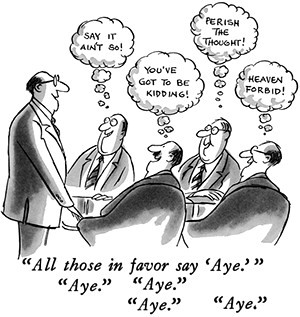
Source: Henry Martin, New Yorker, April 23, 1979
As teams develop plans and get closer to a decision, they usually discard options and commit to a particular course of action. In doing so, teams become invested in their plan. They often over-estimate its chance of success and downplay the possibility that it will have setbacks or fail entirely. The plan they have chosen may be an excellent option—but no plan is perfect. Nonetheless, as the team members invest time and effort in moving the plan forward, they often become less likely to surface questions and concerns. This is particularly true if they are newer or more junior members of the team.
The Premortem is a technique designed to combat over-confidence and groupthink about a plan through a shift in perspective called “prospective hindsight.” Prospective hindsight involves jumping ahead in time, visualizing a particular outcome, and then looking back to consider how that outcome might have occurred. Shifting perspective in this way helps people identify risks, vulnerabilities, assumptions, and gaps in their thinking that they may otherwise miss.
Most Army officers are familiar with post-mortems, debriefs, or “hotwashes” that are conducted after a plan has been implement and used to capture lessons learned. In contrast, the Premortem is used once the team has developed a plan, but prior to project/mission launch. It provides a forum for the team to consider what can get in the way of success, including potential pitfalls and risks that need to be managed. It can help the team overcome blind spots and over-confidence and reduce the chances of unanticipated surprises.
To learn more about the Premortem see this article.

Reflect: Where might a Premortem have helped?
(~5 minutes)
|
Take a moment to reflect on the prompt below. Capture your responses in the text field below.
|
|---|
| Enter text here |
Now that you’ve finished your reflection, watch this video to see what Nobel Prize winner Dr. Daniel Kahneman says about the value of the Premortem technique.

Get warmed up:
(~5 - 10 minutes)
It’s time to warm up with a simple example and practice of the Premortem technique. For illustrative purposes, let’s say you are planning a party to celebrate your parents’ upcoming retirement. You decide to conduct a Premortem on your party plan to ensure it is successful.
Here's what you would do:
Step 1. Fast forward and envision a failure: Imagine that you are looking into a crystal ball and watching the retirement party unfold, and what you see is beyond disappointing. By all accounts, the celebration is a complete disaster. Your parents are unhappy, you feel humiliated, and you highly doubt your parents’ friends will ever RSVP for another party you throw!
Step 2. List every possible cause of failure you can imagine: Now that you’ve envisioned the disappointing scenario, the next step is to consider all the reasons the party unfolded the way it did. As you use your prospective hindsight skills, you determine that the following reasons contributed to the failed event:
- The food arrived late and was cold.
- The band never showed up.
- Thunderstorms rolled in (and the party was intended to be outdoors).
- 3 of your parents’ friends became sick from apparent food-poisoning.
|
What other causes for failure can you think of? Enter your ideas in the text box below. |
|---|
| Enter text here |
Step 3: Prioritize and determine how to mitigate: Now that you have identified several possible reasons for the party’s failure, pick the reasons that concern you the most. Then, consider what actions you might take to reduce the likelihood of each of those reasons becoming a reality. Here’s an example of what you might come up with:
| Reasons for the plan’s failure | How you might have reduced the likelihood of this happening |
|---|---|
| The food arrived late and was cold. |
|
| The band never showed up. |
|
| Thunderstorms rolled in (and the party was intended to be outdoors). |
|
What other reasons for failure can you think of? And how can you reduce their likelihood of happening?
Add any additional causes and how you might reduce their likelihood of ruining your parents’ retirement celebration in the text field below.
| Reasons for the plan’s failure | How you might have reduced the likelihood of this happening | ||
|---|---|---|---|
|
|
||
|
|
||
|
|

Take the challenge: Use the Premortem on a plan with greater complexity
(~5 - 10 minutes)
Now that you’ve warmed up with a simple example, your challenge is to try out the Premortem on a more complex plan.
Consider a Current Plan
Take a moment to reflect on a plan that has some complexity—perhaps it has multiple lines of effort, coordination across multiple groups, or complicated timing (or all of these). The plan you choose to work with should be one that is close to being launched, and one that you have been directly involved with, in collaboration with others. It could be a plan you have co-developed with your unit, your class, your co-workers, your neighborhood or faith community, or your friends and family. Once you have identified a plan, capture a basic outline of that plan in the text field below for reference.
| Enter text here |
Fast Forward & Imagine a Fiasco
With your plan in mind, the next step is to fast-forward to the future. Imagine that several months have passed since launching the plan – and by all accounts, it has been a complete failure. [Note: Imagining a “fiasco” or a “complete failure” may seem extreme. Yet without thinking in those terms, it can be tempting to imagine only minor things that went wrong. It can limit our thinking and cause us to miss important considerations or factors that can be mitigated.]
Those involved in the plan (your peers, your Commanders, your community collaborators, your family members) are barely talking to each other. They are all unhappy with how things turned out. Every time someone alludes to what happened, the discomfort and disappointment surrounding it are palpable.
Consider the Causes of the Failure
Now that you’ve envisioned this unfortunate future state, take 2-3 minutes to capture possible reasons the plan turned out so poorly. Some of the categories you might consider could be:
- Stakeholders
- Events
- Timing
- Environment
- Communications
- Personalities
- Equipment
- Human Error
As you think about reasons for this failure, be as concrete, specific, and realistic as possible. Capture as many as you can think of in the text field below.
| Enter text here |
Prioritize
Now that you’ve captured possible reasons why the plan has failed, pick the top three reasons that strike you as most concerning and/or most likely to happen.
Mitigation Plan
To reduce the likelihood that these factors contribute to the demise of your team’s plan – or to avoid them altogether – what actions might you take to address them? Capture your ideas for how to mitigate the issues you’ve identified in the text field below.
| Enter text here |

Reflect on the exercise
(~5 minutes)
Now that you’ve had a chance to practice the basic components of Premortem, it’s time to think about your experience of doing so. Consider the following questions and capture your responses in the text field below.
- What did you learn?
- What was hard about it?
- In what situations might you use the Premortem in the future?
- In what ways can you envision this technique being more powerful when conducted as a team?
Enter your reflections in the text field:
| Enter text here |

Put the Premortem to work: Use with your team
(~10 minutes)
Although the exercise you engaged in here gave you practice as an individual, the greatest benefits of the Premortem come from using the technique as a team. Each individual on a team has a unique set of experiences and mental models they bring. The Premortem leverages a team’s collective experiences and perspectives and reduces the illusion of consensus by creating a space where team members can actively surface concerns and potential pitfalls in a plan.
Before your team launches its next plan, use the Premortem to proactively identify where the plan could fail. Follow these steps:
- Envision a failure. Start by looking into the future and seeing that the plan is a complete failure.
- Consider the reasons for failure. Ask everyone to take 2-3 minutes to jot down all the reasons the plan was a disaster.
- Share and capture reasons for failure. Go round robin, taking turns describing the causes of the plan’s failure, with everyone in the room sharing one at a time. Capture the causes for failure on a whiteboard or flipchart for a shared visual reference. It is likely that some of the potential causes will be identified by more than one person. Capture this consensus by putting check marks by those items.
- Select top concerns. Once everyone has shared their reasons, choose the top 3-5 items of concern.
- Determine mitigation strategies. Work together to develop ways to avoid or mitigate those issues when/if they occur.
Reflect.
After you’ve done the Premortem with your team, reflect on the exercise either individually or with a peer. Consider the following prompts and capture what you learned in the text field below or in your notebook.
- How did the Premortem benefit your team and/or your plan?
- How was the Premortem different from other risk identification and/or risk mitigation approaches you have used before?
- How did use of the Premortem change the dynamic of your team?
- How did individuals who tend to be quiet and/or less critical of plans in a group setting behave in the context of the Premortem? For example, did you hear certain individuals raise concerns that they may otherwise not have?
| Enter text here |
Revisit
Periodically revisit your list of concerns to re-sensitize your team to problems that might be emerging as you carry out the plan.
If you’d like to print a job aid to guide you in your Premortem exercise, you can find a two-page overview from the Red Team Handbook here (Created by the University of Foreign Military & Cultural Studies (UFMCS)
Defining the Fundamental Problem

Welcome to Defining the Fundamental Problem
(~3 minutes)
This exercise will give you practice in differentiating between the symptoms generated by a problem versus the underlying problem itself. When managing complex problems, we often do not recognize that the immediate issue or concern we encounter (i.e., the “squeaky wheel”) is actually a symptom of a larger or deeper systemic issue. We may get fixated on addressing the symptoms instead of identifying and managing the larger underlying problem.
Why does identifying the fundamental problem matter?
Underlying problems often generate symptoms that appear to require immediate attention. Responding to symptoms with a fast, short-term solution may yield quick results and have short-term benefits. And in some situations, quick response may be necessary and appropriate to prevent or slow further damage. However, when underlying problems or root causes are not addressed (or even recognized), symptoms eventually reoccur. Failure to identify and address the fundamental problem and its root cause may cause it to become more serious over time. Peter Senge (The Fifth Discipline) refers to the tendency to address symptoms rather than diagnosing and treating the underlying issue as “Shifting the Burden.”
For a simple example of responding to symptoms rather than identifying and addressing the underlying problem -
RESPONDING TO SYMPTOMS VS. THE FUNDAMENTAL PROBLEM: AN EXAMPLE
To bring this phenomenon to life, let’s consider a simple example.
Let’s say you have a headache today and you take aspirin to treat it. The headache will likely dissipate from the aspirin, and after it does, you may forget you even had a headache. If you get a headache in a couple of days, you may simply take another aspirin, since that worked before. You might start keeping aspirin with you, and soon you are taking one every time you get a headache. But what if the headache is a symptom of a more fundamental problem? Taking the aspirin every time you have a headache doesn’t do anything about the actual reason for your headaches or give you a way to adjust your health-related behaviors so you can avoid headaches altogether.
If you were to investigate reasons for headaches, it might lead you to consider the possibility that there are underlying issues that could account for the symptoms you are experiencing. For example, the underlying cause of the headaches might be your diet, insufficient water consumption, lack of sleep, or allergies. If you solely address the symptom by treating the headaches with aspirin, you may end up making the problem worse. For example, you may begin to experience digestive issues and stomach pain, in addition to the headaches. But if you instead address the fundamental problem(s), you have a greater chance of eliminating the headaches altogether. While addressing the underlying problem (diet, water consumption, sleep) may take longer and require more effort through behavior modification, you can expect a longer-term and more sustainable impact on your health.

Reflect: When have you treated symptoms versus addressing an underlying problem?
(~5 minutes)
|
Take a moment to reflect on the prompts below. Capture your responses in the text field below.
|
|---|
| Enter text here |
Learn: What clues indicate an underlying problem?
Four clues can help signal when you may be focused on responding to symptoms rather than identifying and addressing an underlying problem. They include the following:
- An issue you have addressed re-emerges.
- The issue worsens – or takes a different shape – over time.
- Additional problems related to the issue emerge.
- There is a sense that nothing you do seems to make a difference in any sustained way.
Defining the issues or “symptoms” is a good place to start. However, rather than moving directly to a solution or “treatment,” it is important to take the time to examine whether there’s a larger underlying problem that is producing the symptoms. Posing questions that enable you to get progressively deeper information about the symptoms will allow you to grasp the root causes and/or fundamental problem more fully, and to develop solutions that are more likely to be responsive and effective.
Tips for identifying root cause
(~3 minutes)
One of the challenges of distinguishing symptoms from underlying problems is that we can simply lose sight of the need to identify and deal with the underlying problem. Sometimes the symptoms are significant and require action. As we work to deal with symptoms, we “can’t see the forest for the trees.” Unfortunately, in addressing symptoms only, we may actually make the underlying problem worse.
Here are a few tips to help:
- It can be helpful to begin by listing all the ways the issue is showing up across time and various contexts. Doing so allows you to think about whether there are patterns and commonalities that point toward an underlying problem.
- It can help to consider all the potential causes of the issue you’re experiencing. What factors might be contributing to the issue? And which ones can you control or influence?
- Consider the actions you have taken to deal with the issue up to this point. How has the situation changed (if at all)? By observing what happens in response to actions or interventions you take (“action learning”), you can uncover useful information about the underlying problem(s) and root causes.
- It can help to simply consider the possibility that the issue you are dealing with might be a symptom of a deeper, systemic problem. Being cognizant of this possibility can prompt you to ask questions to identify the root causes or underlying problem.
As with any skill, practice and reflection will enhance your ability to understand a situation or problem more deeply.
The fishbone diagram: A tool to identify root cause
(~5 minutes)
A fishbone diagram is a template to guide you through all the potential factors that may be causing a given problem. It’s called a fishbone diagram because it resembles a fishbone, with the problem resembling the ‘head’, and the various potential causes resembling the ‘spine’ of the fish.
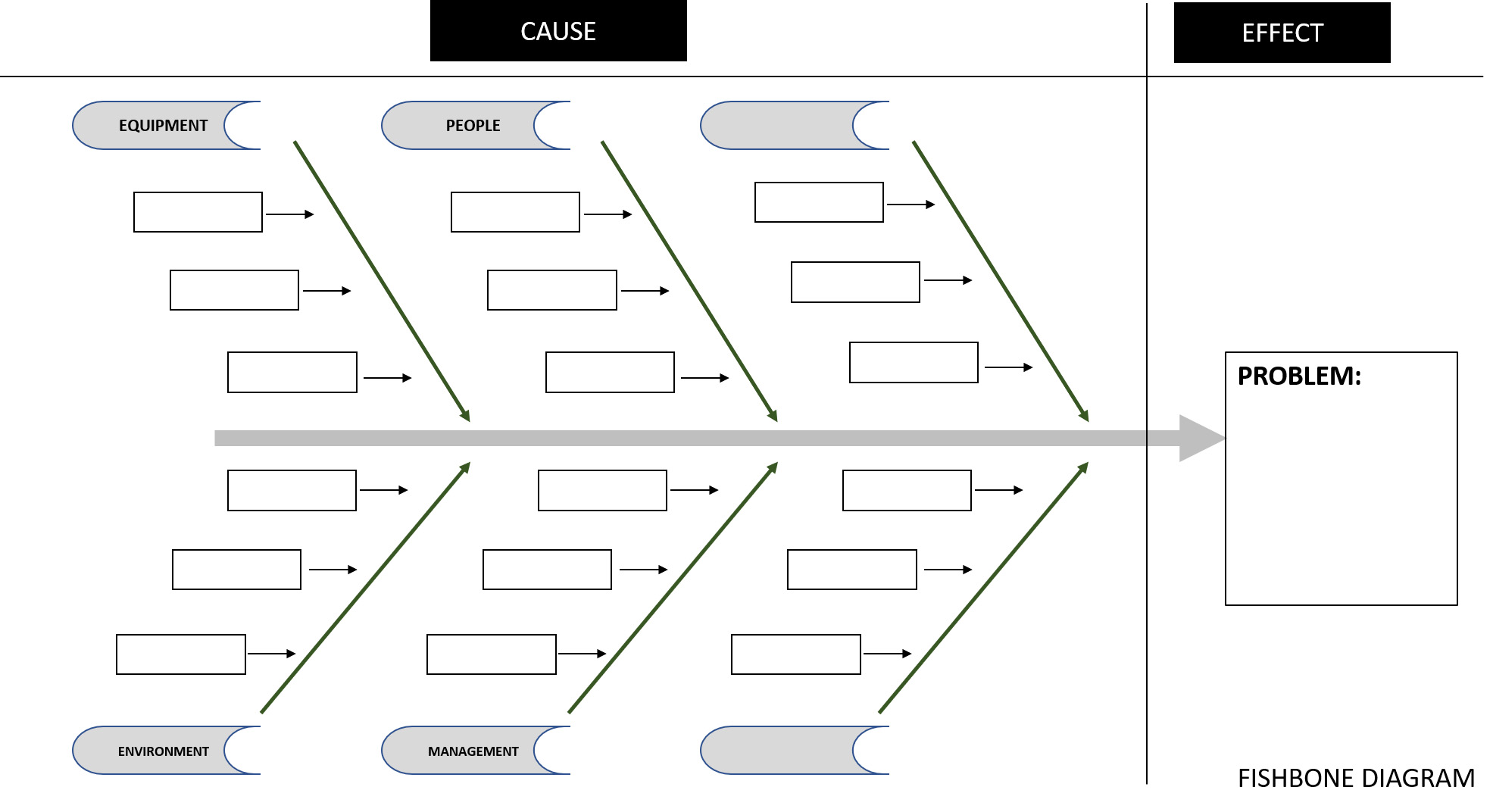
Watch this video for an introduction to the fishbone diagram.
Steps to use this diagram:
- List the symptoms you are noticing in the situation.
- Define the problem that accounts for the symptoms you are seeing and fill it in on the right.
- Brainstorm all of the possible causes of the problem for each category listed.
- It is important that you don’t stop here. Once you have your initial diagram, probe further. Ask yourself ‘why’ for each cause you identify until you believe you have uncovered the true root cause. [To do this, you can use the “5 Whys” technique. Click here to learn more.]
The end result is that you have potential causes of your problem identified, and you can take action to validate the root cause and address it.
Click here to download a blank version of the fishbone diagram.
An Example: Lawn Troubles
(~5 minutes)
Imagine that you just moved into a new house, and you’ve made it a goal to have the best lawn on the block. The lawn currently has large patches of dead grass. At first, you are tempted to jump straight to buying some sections of sod to fully replace the dead grass. Instead, you decide to take a step back and think about what might be causing the dead grass before you jump to a solution.
Using the fishbone diagram, you brainstorm possible causes for the dead grass in your lawn.
Here is the result:
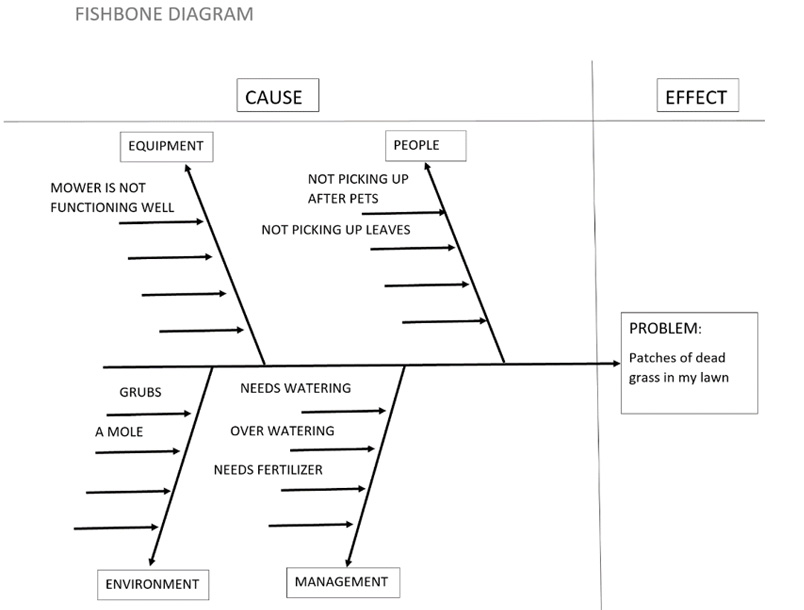
After working through this analysis and investigating the feasibility of some of these causes, you conclude that the most likely root cause of your patchy lawn is a lack of watering.
Why?
You have found no evidence of pest infestation. And you’ve been watching to see if there are neighbors not picking up after their pets. There’s no evidence of that going on, either. And the patchiness of the spots in the lawn do not seem to point to an equipment issue because the damage is inconsistent.
After talking with the previous owner, you learn that they have not been regularly watering the lawn and this has been the hottest year on record. Additionally, the areas with the dead lawn are areas that receive little to no shade. You make a plan to reseed the lawn and set up a regular watering schedule as your approach to meet your goals with your lawn.
Keep in mind that when using a fishbone diagram, you may not have all of the information readily available to determine the root cause of the problem. You might need to go investigate further. But, you can use this approach to ensure you are thinking rigorously about the problem and not jumping to conclusions. It can also help you identify what additional question you still need to answer to validate the root cause of your problem.

Take the challenge
(~10 - 15 minutes)
It’s time to practice the skill of identifying the underlying problem. Download and complete the fishbone diagram template to help you identify the root cause. Or you can draw a fishbone diagram in your journal using the previous example as a model.
Your challenge is this
You will read through a set of news clips and reports about Army training issues. When you have read through the clips, complete your fishbone diagram by defining the underlying problem, exploring potential root causes, and considering possible interventions for addressing the underlying problem.
In 2019, Army Spc. Nicholas DiMona III died during a live-fire exercise in Alaska that some fellow soldiers said lacked control of the maneuver and felt rushed, according to witness statements obtained by Army Times. Soldiers also said that nighttime targets were not always clearly marked as they shot without tracer rounds, the roles of safety and training personnel were mixed and there was confusion among soldiers regarding the shifting and lifting of gunfire. (See this news report for more information).
A vehicle rollover at Fort Polk, Louisiana’s Joint Readiness Training Center left one civil affairs soldier dead and a dozen others injured, according to a release from 1st Special Forces Command. The accident involved a rolled Humvee, Fort Polk spokeswoman Kim Reischling confirmed to Army Times. A Marine was killed in a similar incident at Camp Pendleton, California, on May 9. (See this news report for more information).
The 1st Cavalry Division has moved to oust three junior leaders and ordered reforms to its driver's training program after a 20-year-old infantryman was killed last year in a rollover accident involving a Bradley Fighting Vehicle at Camp Humphreys. The Fort Hood Army division acted after finding that Spc. Nicholas Panipinto had no license or classroom instruction and had received only six hours of hands-on training when he died during a Nov. 6 road test of the Bradley Fighting Vehicle. Two other soldiers were injured. (See this news report for more information).
Two special operations soldiers were killed and three were injured in an aircraft mishap during an Army Special Operations Command training exercise near Coronado, California, according to an Army Special Operations Command spokesperson. The incident occurred when the troops’ Blackhawk helicopter crashed on San Clemente Island. See this news report for more information.
This incident comes after nine service members were killed in an amphibious assault vehicle while returning from a training raid at San Clemente Island. Eight of 15 Marines on board the AAV and one sailor died in that accident. (See this news report for more information).
In fiscal year 2019, the Army suffered a total of 55 Class A mishaps and 61 Class B mishaps, 28 soldier casualties and $362 million in damaged or lost equipment not related to losses in combat. Those mishaps were caused by a combination of increased training with heavy equipment, and the need to inculcate among young troops fundamental skills that have lapsed in recent years, Army Chief of Staff Gen. James McConville told the House Armed Services Committee. (See this news report for more information).
According to a report by the Congressional Research Service, between 2006 and 2018 a staggering 32 percent of active-duty military deaths were the result of training accidents.
During that same time period, only 16 percent of service members were killed in action. And in 2017 alone, nearly four times as many service members died in training accidents than were killed in action. Serious steps need to be taken to prevent these tragedies from continuing.
Complete your fishbone diagram:
Now that you have read the news reports, follow these steps:
- List the ‘symptoms’ you have identified from these articles. Enter those symptoms in this field.
- Define the underlying problem in these articles that accounts for the symptoms you identified. Capture your response in your fishbone diagram in the problem section. (Access blank fishbone diagram here.)
- Next, reflect on the pattern of issues described in the reports, and consider some possible causes for the problem. Consider causes relating to people, equipment, environment, and management. Enter your potential causes in the spine section of your fishbone diagram.
- Now that you have entered some potential causes to the problem in your diagram, what are some ‘why’ questions you can ask to get as close to the root cause as possible?
Capture your ‘why’ questions here: - Select three root causes from your diagram that you think are most probable. What might be potential solutions to those root causes you identified? Fill in your ideas in the table below.
|
|
|---|
| Enter text here |
|
|
|---|
| Enter text here |
| Root Cause | Potential Solution | ||
|---|---|---|---|
|
|
||
|
|
||
|
|
Now that you have explored the root cause of the situation, take a moment to view and compare your responses with an expert’s fishbone diagram, ‘why’ questions, and potential solutions. As you read the expert’s response, consider:
- What similarities exist with your responses and the expert’s response?
- Did the expert note anything you did not think of?
- Did you think of something the expert did not?
EXPERT PERSPECTIVE
Symptoms identified:
- Failed training exercises
- Solider deaths and injuries
- Overturned vehicles
- Equipment malfunctions

Possible questions to help pinpoint the root cause:
- Why are roles and expectations unclear during training exercises?
- Why are training staff inexperienced?
- Why are novice soldiers in exercises that are too advanced for them?
- Why is there insufficient time available for training? How is time being allocated to other activities, relative to training?
- Why were training exercises run in conditions that may not have been ideal?
- If the equipment is not sufficiently maintained, why is it not sufficiently maintained? Is it a matter of time? Skill? Oversight?
- What is preventing higher command from pushing for investigation into training practices? Are they aware of the issues? Do they believe the issues are lower priority, relative to other ones?
Solutions or Interventions:
The appropriate solutions to the problem will be informed by identification of the root causes.
The expert selected three potential root causes with solutions to serve as examples for you. Keep in mind, you would need to validate your root causes through investigation before deciding on a solution.
| Root Cause | Potential Solution |
|---|---|
| Insufficient equipment maintenance | Revamping maintenance personnel selection practices, in tandem with offering a training program to close knowledge and skill gaps |
| Unclear roles/expectations | Clearly defined roles and expectations at start of training |
| Insufficient time for training | Allocating a set number of training hours per month and holding everyone accountable for ensuring they take place |

Reflect on the exercise
(~5 minutes)
Now that you’ve had a chance to think about how symptoms can be indicative of a fundamental or underlying problem, it’s time to think about the exercise experience. Consider the following questions and capture your responses in the text field below.
|
|---|
| Enter text here |

Meet with your peers
(~20 minutes)
Get together with a peer group to share your responses to the Defining the Fundamental Problem exercise and some of the insights you gained. After each person shares their responses and insights, discuss the following questions as a group:
- What are some examples of symptoms with larger underlying problems that you – and members of your group - have encountered in your careers?
- In these experiences, what helped you differentiate symptoms from underlying problems? What made it hard to differentiate symptoms vs. underlying problems or root causes?
- How do you anticipate distinguishing symptoms from underlying problems personally or professionally?

Put your skills to work
(~10 minutes)
Now, it’s time to try out your Defining the Fundamental Problem skills in your work.
In this activity, you will reflect on an experience at work, school, or your personal life.
Here’s what to do:
|
|---|
| Enter text here |
Battlefield Critical Thinking Skills



























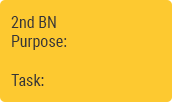
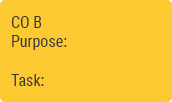



assess
influence
predict
Disrupt/Exploit
react
Mitigate/Exploit
























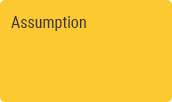
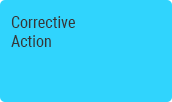




























































































































































































































































































































































































































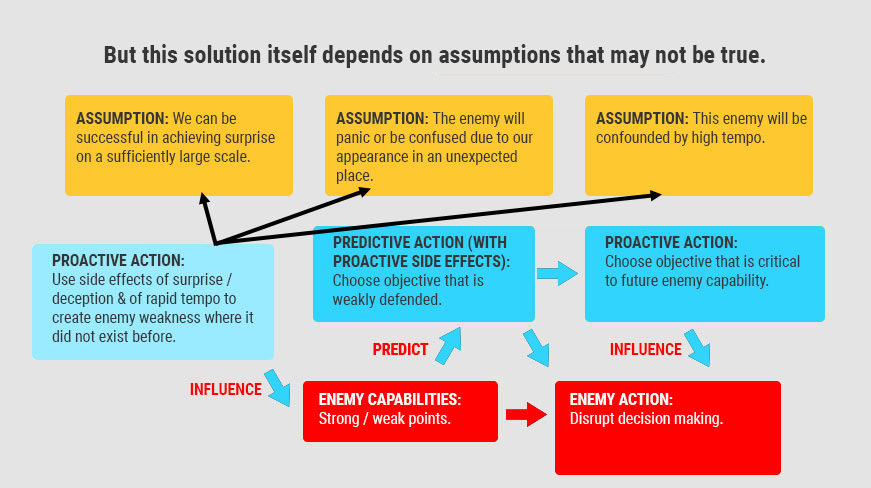



























Welcome to ARI’s Skill-Building Exercises
The exercises provided here are designed to help you build advanced thinking skills. They offer practice in the cognitive skills needed to be an effective strategic thinker and to manage complex problems, such as:
- Reflective thinking
- Critical thinking
- Asking useful questions
- Systems thinking
- Recognizing connections
- Strategic foresight
- Cultural acuity
The exercises can also help you develop greater self-awareness about your thinking skills and your ability to “think about thinking” (metacognition).
About the Exercises:
- You determine the pace. The exercises are designed so you control the pace. Take as much or as little time as you need.
- Exercises are modular. Each exercise is divided into brief sections. You choose whether to work on segments one at a time or to work on several segments in one sitting.
- A sequence is recommended within each exercise, but not required. The exercises are designed so you can jump around to different segments at your discretion. For optimal learning and skill acquisition, we recommend going through the segments in the sequence they are presented in the exercise.
- All you need is this website. Several of the exercises are interactive and do not require a facilitator, so you can complete the exercises using this site, along with a notebook and pen (optional). You may want to print portions of your work if that capability is available to you.
- You can complete the exercises on your own or work with others. There are segments where group discussion is recommended. Those are opportunities for you to reflect and discuss with your peers, get feedback, and enhance your learning.
- Exercises are designed for multiple repetitions. Repeating the exercises allows for the skill development and deeper learning that comes with practice.
Practice Matters
In this video, COL (Ret.) Jim Greer describes why practice is so important for building advanced thinking skills.
The modern Army faces operational environments that present enormous challenges. Conditions are highly dynamic. Situations consist of multiple players and factors that interact in complicated and unexpected ways.
Effectively managing these environments requires complex cognitive skills. Leaders need to be able to think holistically, recognize connections and linkages, anticipate the ripple effects of decisions, and visualize how situations might evolve in the future.
Many Soldiers are unprepared for operational assignments that require complex problem solving and strategic thinking. Before Army leaders can step into positions that require them to manage complex problems, they need opportunities to practice the advanced skills needed to understand and manage complex problems.
As an analogy, professional basketball players don’t just play a lot of basketball. They practice component skills: ball-handling, shooting baskets, rebounding, footwork, speed, and endurance. Anyone who plays basketball at advanced levels has been running drills and honing these individual skills for many years. Developing one’s complex problem-solving abilities is no different. It requires time, practice, and attention to foundational skills.
These exercises help individuals gain practice in the skills needed for complex problem solving.

Question: I tend to operate at the tactical or operational level. Isn’t strategic thinking and complex problem solving just for the strategic level?
The ability to think strategically is often equated with the ability to think about the strategic level of war. But there are important distinctions between them. The strategic level of war is concerned with the art and science of employing national power. In contrast, strategic thinking can happen at any level, by individuals at any rank, and is relevant throughout a Soldier’s career.
"I think people underestimate the fact that strategic thinking can occur at the tactical and operational level."
-BG Paula Lodi
Just as general officers think strategically about how to orchestrate a campaign to achieve national strategic goals, platoon leaders can think strategically about the effects their units’ actions may have on the broader mission. At the same time, although strategic thinking can happen at any level, the types of tasks that require strategic thinking skills are likely to expand as individuals advance in rank and responsibility.
Listen to LTG (ret) H.R. McMaster describe why junior leaders should practice and develop strategic thinking skills.
Writing Matters
In the skill-building exercises, you’ll frequently be asked to write down your thoughts in response to a prompt. This writing is not meant for others, but rather for your own development, through the process of putting your thoughts into words and reflecting on your thoughts over time.
Expressive Writing
Expressive Writing is the practice of exploring your thoughts and feelings by writing to yourself. Although it seems like a simple exercise, expressive writing provides you the opportunity to discover parts of yourself that are not always clear and conscious. By translating your memories, feelings, and experiences into language, it is possible to see novel insights and make connections between experiences you never realized before. In addition to greater clarity into yourself, research has revealed expressive writing has profound effects on cognitive, emotional, and physical health. Overall, it is a useful tool worth trying.
Recommendations
Find a quiet place and time where you won’t be disturbed. Sit for a moment and let your thoughts and feelings come to mind. Ask yourself which thought/feeling seems most persistent. Whatever comes to mind, focus on it, and begin to write about it. Write continuously for at least 15 minutes without regard to spelling or grammar. If you run out of things to write about, just repeat what you’ve already written.
Write for a minimum of 15 minutes for at least three times. The times can be separated by as little as 10 minutes or as much as a week, with 1-2 days being ideal.
Afterward, it is possible that you may feel differently than when you began. Depending on what you write about, some people report feeling sad. Others feel excited and clear-headed. Others feel confused. All of these are normal and tend to abate shortly afterward. If you find yourself getting extremely upset every time you think on a topic, then simply stop writing or change topics.
Strategic Thinking Practical Exercises
Welcome to Strategic Thinking Practical Exercises
(~3 minutes)
These exercises will give you practice in cognitive processes that support your ability to think strategically.
What is Strategic Thinking?
Strategic thinking is a multidimensional, higher-order cognitive skillset. It involves leveraging an integrated perspective to envision and pursue a desired future state.
Strategic thinking is not synonymous with military strategy, nor the direct study and creation of strategy. Yet the ability to generate and implement strategy well – and better than our adversaries – is the desired outcome of developing strategic thinking.
The set of cognitive skills needed to think strategically should be practiced and developed over time – even when dealing with problems or environments that are not at the strategic level.
ARI researchers identified six primary skills that make up the strategic thinking competency, which are applied together and enabled by deep and relevant contextual knowledge, emotional regulation, communication skills, and collaboration with others.
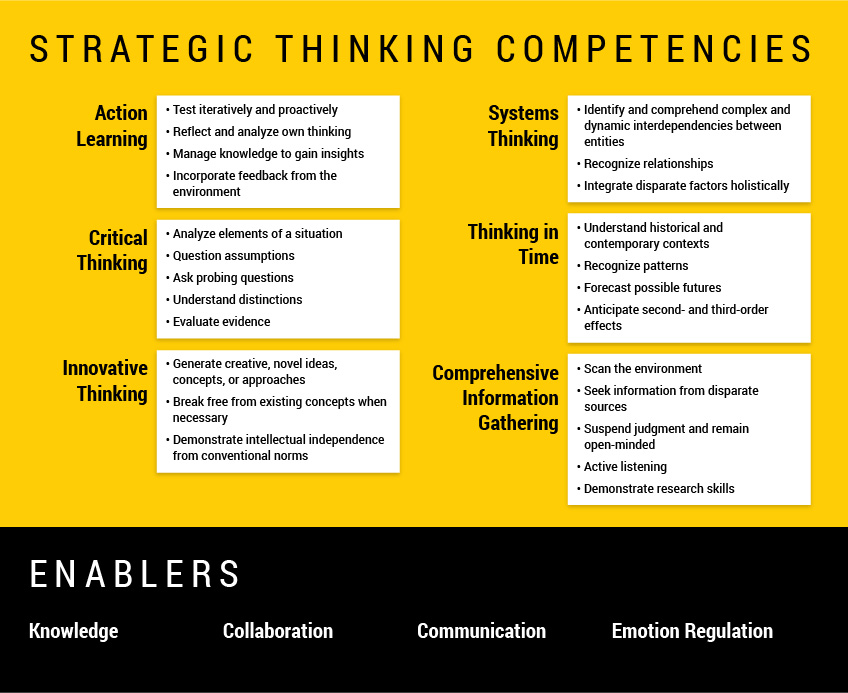
Why does Strategic Thinking matter?
Managing complex problems requires that you, as an Army leader, can understand complex environments, anticipate change, think long-term, and shape the future in a way that aligns with national interests. Strategic thinking supports your ability to do this.
Strategic thinking can happen at any level, by individuals at any rank. Just as General Officers can think strategically about how campaigns can be orchestrated to achieve national strategic goals, platoon leaders can think strategically about how their units’ actions can have a ripple effect on the broader mission.
What do the exercises involve?
The strategic thinking exercise involve practicing the skills that are foundational to strategic thinking. Four practical exercises (Reflecting on the Environment, Asking Powerful Questions, Connecting the Dots, and Envisioning Potential Futures) offer practice in skills such as reflection and critical thinking, systems thinking, questioning for purposes of learning and information gathering, and thinking in time.
Reflecting on Experience

Welcome to Reflecting on Experience
(~3 minutes)
This exercise will give you practice in reflection – a skill that is foundational to becoming a continuous learner and strategic thinker. Through this exercise, you will practice reflecting on an experience that didn’t go the way you expected. You will practice answering progressively deeper types of questions to help you increase your understanding and construct meaning from the experience.
Reflection is the process of consciously thinking about and analyzing what you are currently experiencing, what you have previously experienced, and what you have learned from those experiences.
Why does reflective thinking matter?
In the most basic sense, reflective thinking helps you learn. By taking time to step away from daily tasks and process what you have experienced, reflection creates the space for insights to emerge.
Reflection allows you to gain greater insight into the dynamics of a situation and your role in it. It enables you to consider connections and inter-relationships that may not be immediately apparent.
Developing a deeper understanding of what happened and why things unfolded the way they did can help influence how you manage similar situations in the future.
Listen to LTG (ret) H.R. McMaster describe why reflection is important.
(Recorded in 2017)

Reflect: what makes reflection hard?
(~5 minutes)
Take a moment to reflect on the prompt below. Capture your responses in the text field below.
Reflect: what makes reflection hard?
|
|---|
| Enter text here |
Now that you’ve finished your reflection, you can click Expert Response to see what experts say about common challenges relating to reflection. Did you identify any of the same challenges?
Reflecting – and fully benefiting from it - can be challenging for several reasons:
- It takes time. Reflective thinking requires time, which means taking time away from other activities. It also requires practice to refine your skills.
- People tend to engage in reflection only after an event (e.g., debriefs, hotwashes, AARs, lessons-learned exercises), rather than before and/or during an event. This reduces the benefits of reflection and limits opportunities to learn and practice reflective thinking skills.
- Exclusive focus on the “what” (vs. the “how” and “why”) limits what you learn. People tend to focus reflection on what happened (content or context reflection) rather than thinking about how it occurred (process reflection) or considering why it occurred (premise reflection). Focusing only on what can limit your learning and the insights you discover.
- Reflecting only by yourself means you miss important insights. Individuals often work alone when they reflect on an event, which is a great place to start. But by only reflecting individually, we can miss out on valuable reflection that occurs through group reflection and discussion.
- It doesn’t just happen naturally. Some people see reflective thinking as something that happens naturally, rather than a skill requiring intention and deliberate practice. As with any skill, becoming proficient at reflection requires practice.
Consider the tips in the next section to help you overcome these challenges and improve your ability to reflect. Click Finished when you’re done with this activity.
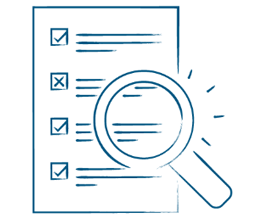
TIPS
(~2 minutes)
Reflective thinking is most valuable when it is ongoing and iterative. Many people think of reflection as something that happens at the end of an event. In fact, it can be useful before and during an event as well as afterward.
Use these tips to help you throughout this exercise and in your daily work. You can revisit them at any time.
- Ask yourself different types of questions (e.g., What? How? Why? What if? How might?).
- Use reflection iteratively and in an ongoing manner. Reflect before and during an event, as well as after.
- Reflect before an event to help you think ahead, mentally rehearse, and anticipate problems.
- Reflect during an event to help identify problems, re-plan, make decisions, and solve problems.
- Leverage different perspectives in your reflection. Record your reflections and share and discuss them with others.
- Work reflection into your everyday routine. Reflect on both personal and work experiences. Practicing reflection by yourself and with others will promote your ability to learn continuously and transfer your learning to future experiences.
Listen to COL (Ret.) Jim Greer describe the importance of getting to “why” when reflecting.
(Recorded in 2017)
As with any skill, practice and reflection will enhance your ability to understand a situation more deeply.

Take the challenge
(~10-15 minutes)
It’s time to practice reflecting.
Your challenge is this.
Think about a recent situation or event that did not go as you expected it to. It should be an event you were personally involved in, rather than one you heard about secondhand.
It can be a situation where the outcomes were worse than expected or one where things turned out better than expected.
The situation should be vivid enough in your memory that you can recall specific details.
Now, spend 10-15 minutes reflecting on the what (content and context), how (process), and why (premise) of the event. Use the starter questions below; but don’t feel limited to these.
- Content & Context reflection: Consider and describe what happened.
- When did this happen?
- Where did it happen?
- What happened?
- Who were the key players in the situation?
- What was the environment within which this situation took place?
- What situational factors were at play?
- Process reflection: Consider and describe how the event unfolded.
- How did you/your unit’s actions influence the outcome of the situation? How did your actions (or your unit’s actions) influence the actions of others?
- What was the nature of the surprise? How is what happened in this situation different from what you expected?
- What did you look for to give you a sense of how your approach was working?
- What questions does the outcome raise for you?
- What might you (your unit/your commander/the Army) have done differently in this situation?
- Premise Reflection: Consider why the event happened and the assumptions you held about the situation.
- Why do you think things unfolded the way they did? What makes you think that?
- Are there other ways of interpreting the situation? Other perspectives to consider?
- Going into the situation, what were your assumptions about the situation and the actions you needed to take? What led you to those assumptions?
- Were you expecting a different outcome than the one you experienced? If so, describe the outcome you expected and why you expected that.
- How might you have tested or verified the assumptions you held?
- How did your personal characteristics (such as your background, your experience, your point of view) affect your decisions and the outcome?
Capture your responses in the text field below.
Capture your responses in the text field below.
Capture your responses in the text field below.
| Now, spend 10-15 minutes reflecting on the what (content and context), how (process), and why (premise) of the event. Use the starter questions above; but don’t feel limited to these. |
|---|
| Enter text here |

Reflect on the exercise
(~5 minutes)
Now that you’ve had a chance to reflect on an experience that didn’t go as planned, it’s time to think about your experience of reflecting. Consider the following questions and capture your responses in the text field below.
|
|---|
| Enter text here |

Reflection Strategies
(~2 minutes)
Over time and with practice, we can develop strategies to help us reflect. Listen to (Ret.) COL Jim Greer describe some of his strategies for reflective thinking in the video below.
(Recorded in 2017)

Meet with your peers
(~20 minutes)
Get together with your peer group to share the situation you reflected on and some of the insights you gained by reflecting on it. After each person shares their reflections and learnings, discuss the following questions as a group:
- What have you gained from reflecting on the situation?
- Think about the different types of questions (What, How, Why questions) you considered. How might different types of questions contribute to deeper insights?
- In what ways do you anticipate using reflective thinking in your daily operations?
- What might get in the way of reflection? How might you address those obstacles?

Share your insights
(~6 minutes)
One advantage of this web-based exercise is the opportunity to see and learn from how others respond to similar questions.
Consider the following question, and enter your response in the text field below:
- What are some ways you will incorporate reflective thinking more fully into your daily routine?
| What are some ways you will incorporate reflective thinking more fully into your daily routine? |
|---|
| Enter text here |

Incorporating Reflective Thinking Into Your Work
(~3 minutes)
Reflective thinking develops through practice and a variety of experiences. Listen to BG Paula Lodi share how she uses reflective thinking in her work.
(Recorded in 2017)
Ask A Mentor
(~10-15 minutes)
There is much to learn from those with experience.
Your next challenge is this: Identify a mentor or other leader you respect.
Ask him/her to share with you:
- How he/she incorporates reflection into his/her daily work
- Some tips for incorporating reflection into your day-to-day activities
Jot those tips in a notebook for future reference
Put your reflection skills to work
(~10 minutes)
|
Now, it’s time to try out your reflection skills in your work.
|
|---|
| Enter text here |
Asking Powerful Questions
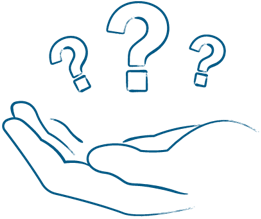
Welcome to Asking Powerful Questions
(~3 minutes)
This exercise will give you practice in asking useful and varied questions to understand complex situations more fully. It will also give you practice in evaluating your questions and considering how your questions impact what you can learn.
(Recorded in 2017)
Why does Asking Powerful Questions matter?
Asking good questions is an important building block for becoming a strong strategic thinker and managing complex problems. Only when we truly understand a problem, can we begin to solve or manage it. Asking and seeking answers to questions helps us understand problems more deeply.
Asking good questions enables us to:
- Gain information and insights.
- Promote critical thinking and deep learning.
- Identify and challenge assumptions.
- Create, reinforce, alter, or discard assumptions.
- Explore alternative perspectives.
- Shape our inquiry.
- Learn.
Listen to COL (Ret.) Jim Greer explain the importance of asking powerful questions.
Reflect: What makes a useful question?
(~5 minutes)

Take a moment to think about the following reflection questions. Record your answers in the text field below.
- Why is it important to ask questions?
- What do you think makes a useful question?
- Are some questions better than others? In what ways?
- Consider the questions you might ask to understand tactical or operational issues, compared to questions you might ask to understand strategic level issues.
- How would you describe the differences in the types of questions?
- What sort of information are they likely to elicit?
- When have you asked questions to gain a deeper understanding of a problem - either personally or professionally?
- How did asking questions help you gain a deeper understanding?
| Reflect: What makes a useful question? |
|---|
| Enter text here |
What's hard about asking powerful questions?
(~3 minutes)

A significant challenge to generating insightful questions is our cultural tendency to be action oriented. We often want to identify solutions quickly in order to get moving.
Most of us are inclined to respond rapidly to solve the immediate problem (or the problem as it appears on the surface). We are reluctant to take time to explore the nature of the problem itself and develop a deeper understanding before attempting to solve it.
As a result, we may end up with solutions that do not adequately address the underlying problem or root causes - and offer only a "band aid" or short term solution.
Understanding why it's challenging to develop good questions can help you anticipate and manage potential pitfalls. To learn more about some of the challenges click below.
It can be challenging to ask powerful questions. Some of the reasons include:
- We tend to ask certain kinds of questions depending on our personal point of view, education, biases, and experiences.
- Questions influence the information we seek out and pay attention to. This can limit our learning and our ability to get a deeper, clearer understanding of complex problems.
- We often start with a pre-determined view of the problem, which leads us to look for specific kinds of information and limits what we think about the problem.
- Questions we pose may be too narrow. They may provide answers to only a small portion of the problem or provide only descriptive information.
Effective strategic thinking requires an active learning stance and the ability to ask questions that allow us to develop a fuller understanding of the problem.
Take the challenge: What questions would you ask?
(~5 minutes)

Imagine this: You've been deployed overseas, and you've been asked to assess and report your understanding of a nearby area of operation. Here's an image of the area.

MSGT Jeremy Lock (Ret.)
Your challenge is this:
Take a few minutes to generate ten or more questions about the situation you see in the image. The questions you ask should be ones that, if answered, will help you understand the situation presented in the image more fully.
Capture your questions in the field below. After adding a single question, you will have the chance to add more by clicking 'Add Question'. Then click Finished.
Reflect on the questions you developed
(~3 minutes)

Reflect on how you’ve categorized your questions. Then, consider the following questions and record your answers in the text field below.
| What was hard about developing questions, and what seemed easy? |
|---|
| Enter text here |
- Which of your questions, if any, involved asking about such factors as:
- Culture, ethnicity, social structures (tribal, family), nationality, religion?
- Economics, politics, military forces?
- Infrastructure, physical environment, terrain, weather?
- Technology, information systems, and other resources?
Drag and drop your questions into the relevant categories below:
| Culture, ethnicity, social structures (tribal, family, nationality, religion) | Economics, politics, military forces | Infrastructure, physical environment, terrain, weather | Technology, information systems, and other resources | Other |
|---|---|---|---|---|
As you look at how you’ve categorized your questions, consider and record your answers in the text field below:
- Are there certain types of questions you have more of than others?
- Are there certain types of questions you didn't ask?
- Considering the above list of factors, what additional questions would you ask to understand the situation in the image more deeply?
|
As you look at how you’ve categorized your questions, consider and record your answers in the text field below:
|
|---|
| Enter text here |
Know your question types
(~5 minutes)

Skilled questioning starts with the ability to ask a variety of types of questions. The different types of questions range from descriptive to explanatory and exploratory. Click on the buttons below to learn more about different question types.
| Description | Examples |
|---|---|
| Descriptive questions typically ask What, When, Where, and Who. |
|
| Description | Examples |
|---|---|
| Explanatory questions ask for reasoning or interpretation and often begin with Why and How. |
|
| Description | Examples |
|---|---|
| Exploratory questions ask for inference and considering implications and often begin with What if? What might? and How could? |
|
| Description | Examples |
|---|---|
| Testing or challenging questions ask justification of assumptions and often begin with Why would? or Why couldn’t? |
|
Question power
In addition, questions can have varying degrees of power, as demonstrated by the Powerful Question Pyramid. Certain questions are more likely than others to yield information and insights that can drive deeper understanding. For example, generally speaking, a Why question can help you gain deeper understanding than a Where question because of the potential richness of the answer.
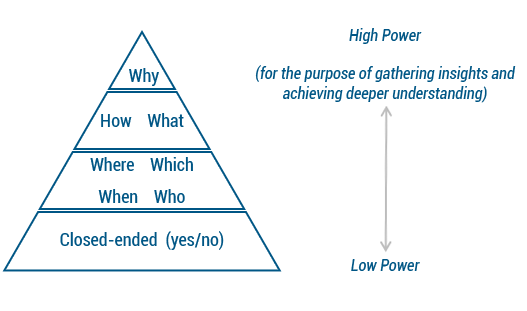
Listen to COL Jim Greer describe why asking a variety of questions is important.
(Recorded in 2017)
Challenge: Characterize your questions
(~3 minutes)

Now take a moment to review the set of questions you generated about the image.
The questions you posed:
|
|---|
| Enter text here |
- If you had to select your top five questions, what would they be? (drap and drop them into the field below).
| Your top 5 questions |
|---|
What might an expert ask?
(~3 minutes)
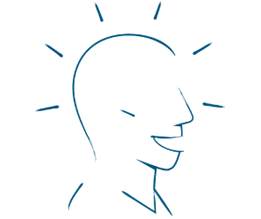
In working to understand a complex problem more deeply, there are no right or wrong questions. However, certain questions are more likely to yield richer and more useful information. Listen to the questions this experienced Army leader asks to understand the situation in an image. The image he develops questions around is not necessarily the same image you viewed. But it is useful to see what questions he asks. As you watch the video, take note of any questions that stand out to you as being particularly strong. Record your answers in the text field below.
(Recorded in 2017)
| What might an expert ask? |
|---|
| Enter text here |
When you're finished watching the video and capturing your thoughts, click Finished.
Reflect as a group
(~10 minutes)

Get together with your peers. Reference and share your responses to the various challenges within this exercise.
If you'd like to download and print your inputs in this exercise, click on Download my work below.
Also, print a copy of this Asking Powerful Questions job aid for reference during your discussion.
Divide your discussion into two parts:
PART I: Share your questions
In your group, take turns reading aloud your top five question lists. As you listen to each person read their questions aloud, do the following:
- Mark a "+" next to any questions you had in common with the others.
- Circle any questions you had that were unique.
PART II: Reflect on your questions
Use the Asking Powerful Questions job aid to reflect on the questions on your lists:
- What types of questions were generated?
- Which questions are more powerful or insightful than the questions on your list?
- Which questions do you think are the most useful/critical for understanding the situation? Why?
- If you could make any changes to your list now, what would they be?
Final Reflection
(~5 minutes)

Review the questions you originally generated here.
Then, spend a few minutes reflecting on the following questions.
Think about how and where you would seek answers to your top five questions. Capture your ideas for each question in your journal.
- Where would you look? Why?
- What could you read? Why?
- Who would you talk to? Why?
- What communities of practice would you consult with? Why?
- Where might an anthropologist look to answer these questions? An economist? A politician? A scientist? How might the approach of these other professionals differ from your own?
After you've tried out this activity, click Finished.
Connecting the Dots
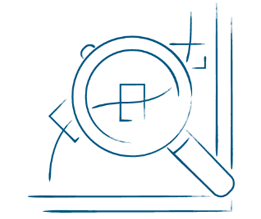
Welcome to Connecting The Dots
(~3 minutes)
This exercise will give you practice in systems thinking and synthesis; complementary skills that are foundational to strategic thinking. Through this exercise, you will identify connections among information depicted in a set of images and generate a story about how the information fits together.
Systems thinking is the ability to recognize and account for the relationships and interactions among people, events, regions, and other factors. As described in ATP 5-0.1 (Army Design Methodology), systems thinking helps planners:
- Avoid thinking about problems in a compartmentalized manner.
- Consider how problems in a system are interrelated.
- Develop holistic approaches to solving them.
Synthesis is the ability to integrate information together into a cohesive whole.
As with any skill, becoming proficient in these skills requires practice.
Listen to COL (Ret.) Jim Greer discuss the importance of making connections.
(Recorded in 2017)

Connecting The Dots: An Example
(~5 minutes)
Look at the following three pictures. What connections do you think might exist between them?
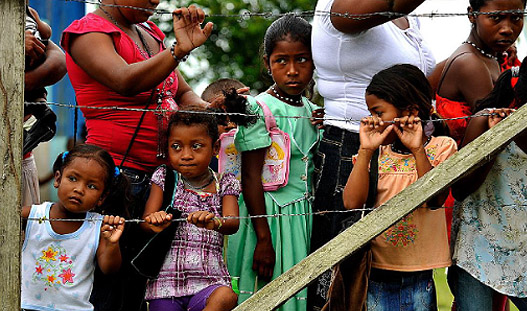

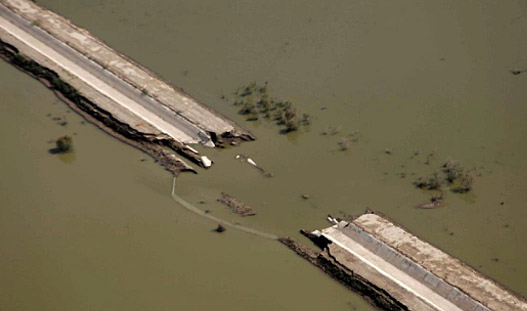
Some key points that you can discern from the photos include:
- The women and children in Picture 1 look displaced.
- Picture 2 depicts disaster relief planning.
- Picture 3 depicts flooding, likely in relation to some kind of storm system.
Based on this information, one might connect these key points into the following narrative:
A hurricane has ravaged this island. As a result, the local people are displaced, hungry, and looking for help. The US military is preparing aid to help the people affected by this disaster.

Reflect: What’s Hard About Systems Thinking?
(~5 minutes)
Take a moment to reflect on the prompts below. Capture your responses in the text field below.
|
|---|
| Enter text here |

Now that you’ve finished your reflection, you can click on Learn More to see what an expert has to say about common challenges relating to systems thinking. Did you identify any of the same challenges?
Systems thinking can be challenging for the following reasons:
- It takes time. Recognizing and appreciating connections takes time. In the rush to move to solutions, we may minimize the importance of systems thinking and synthesis or skip them altogether.
- There’s more than meets the eye. We often focus on surface features and the most obvious commonalities, without digging deeper to search for nuances and more subtle connections that are critical to appreciating complex problems. Approaches generated based on surface-level understanding may be short-term-oriented and/or lack the ability to address fundamental underlying issues.
- We often over-rely on analysis.
- Many of us over-rely on analytic approaches to appreciate the complexity of a situation and solve problems. As vital as analytic approaches are, if used in isolation, they can be counter-productive in the context of thinking strategically and thinking about complex problems.
- Over-reliance on analytical thinking can limit our ability to see beyond the immediate situation and grasp important connections that are critical to appreciating the problem, and shaping the future.
Consider the tips in the next section to help you overcome these challenges and improve your ability to “connect the dots.”

Tips
(~2 minutes)
Use these tips to help you “connect the dots” throughout this exercise. You can revisit them at any time.
To recognize connections and integrate seemingly unrelated information:
- Consider the features and characteristics of the information depicted. What is its source? What does it tell us? What questions does it raise?
- Think about what is similar and what is different about the information depicted.
- Consider a range of factors in addition to those that are immediately apparent – e.g., politics, economics, infrastructure, social structures, physical environment, cultural norms, and religion.
- Consider the inter-relationships and interactions among the information, instead of just considering it in isolation.
- Create a sketch, graphic, or concept map that shows connections and interactions among the information depicted.
- Describe the “big picture” you have discerned to others using a story, and seek feedback to help identify gaps or relationships you might not have considered.
As with any skill, practice and reflection will enhance your ability to recognize connections and bring them together into a coherent whole.

Take the Challenge: Make Connections
(~10 minutes)
You have been assigned to review images to inform planning operations within a strategically important geographical region. You need to think holistically across the collection of images and look for any connections that may exist. Keep in mind that there are no right or wrong answers here. This is your interpretation of what you are seeing.
Take a few minutes to look at the images one at a time. Use the prompts below to help you think about the images.
Consider:
- What might the image depict?
- Who are the key players? Where are they located in the scene? What might they be doing and why?
- Does the image suggest a particular location, time of day, or season?
- What might be going on outside the frame of the image, and what might that mean for what’s going on inside the image?
- Consider the image from the following points of view:
- Security
- Politics
- Society
- Technology
- Physical environment
- Religion
- Infrastructure
Does one or another of these points of view help you understand the image more completely?
Click Start to view the images.


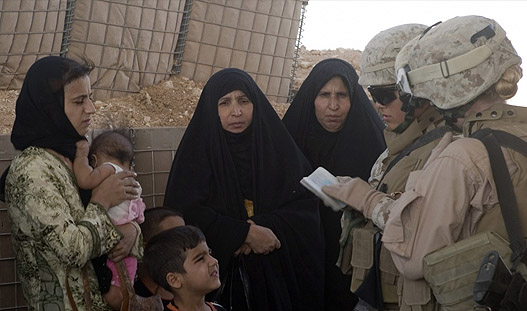
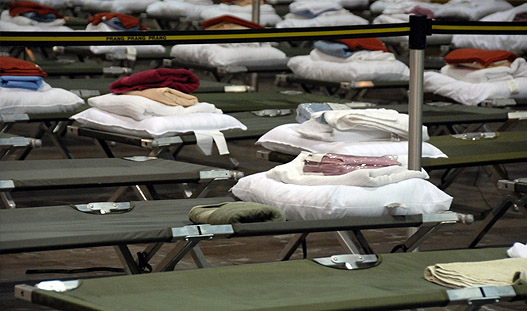
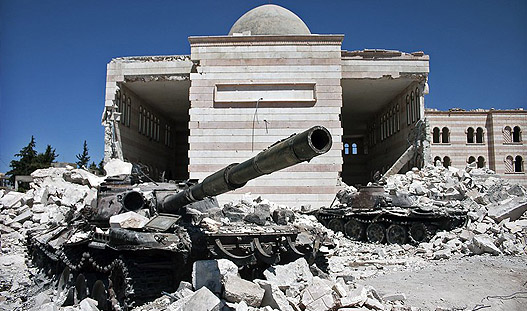
| After viewing each image, capture the connections you see in the text field below. |
|---|
| Enter text here |

Create Your Story
(~10 minutes)
|
Using the connections you identified in the image set above, generate a brief but informative story about why those connections exist. Your story should describe the critical data points from each image, the connections you see between the images, and the implications of those connections.
|
|---|
| Enter text here |

Reflect
(~5 minutes)
|
Reflect on the following questions on your own. Capture your responses in the text field below.
|
|---|
| Enter text here |

Refine Your Story
(~10 minutes)
Now, you’ll practice integrating new information into your story. You will receive a modified collection of images, including images you had previously and new images. Some images from the first collection will be removed.
Modify your story to only include connections for this new set of images. How are the connections you made previously impacted? How would your story need to change to account for the additional images and connections? What parts of your story will you need to remove?
Take the time to refine your story in the text field below based on the additional images.
Click Reveal my new images to reveal your modified set of images when you are ready.
|
Capture your refined story based on these additional images: |
|---|
| Enter text here |

Strategies for Systems Thinking
(~2 minutes)
Over time, we can develop strategies to help us think holistically. Listen to LTG H. R. McMaster discuss some of his strategies for thinking systemically in the video below.
(Recorded in 2017)

Reflect as a Group
(~20 minutes)
Now you have an opportunity to get together with a peer group to share the refined story you crafted earlier. After each person shares their story, allow the group to react and share feedback on the connections you made.
Then, discuss the following questions as a group:
- What did you find difficult/challenging about this activity?
- If you could have one other image (or piece of information) that would make this situation clearer to you, what would that image (or piece of information) be? How does it fit into your story? How does it help clarify things?
- What did you learn by hearing others’ stories? How did their stories differ from yours? Did you understand your images and/or story differently, after hearing others’ stories (e.g., additional connections)?

Share Your Story
(~5 minutes)
|
Part of the value of these exercises is being able to leverage your peer community and learn from one another. To contribute to our learning community, capture your refined story for the last collection of images you received, then click Submit. |
|---|
| Enter text here |

Developing Systems Thinking Skills
(~3 minutes)
Systems thinking develops through practice and a variety of experiences. Listen to COL (Ret.) Jim Greer share how he developed his systems thinking skills.
(Recorded in 2017)

Final Reflection
(~5 minutes)
|
Instructions: Consider each of the following questions and capture your responses in the text field below.
|
|---|
| Enter text here |

Apply: Making Connections Between Current Events
(~10 minutes)
Now, it’s time to apply what you’ve learned about systems thinking and synthesis to a new situation.
In this activity, you will identify connections between two or more current news stories.
Follow these steps:
- Start by reading a trusted news source and selecting two or three news stories.
- As you read each story, look for connections that could be made between the other stories you selected. The connections can be obvious, or they can be more of a stretch. Consider different aspects such as:
- Security
- Politics
- Society
- Technology
- Physical Environment
- Religion
- Infrastructure
- Be sure to explore all possibilities.
- Then, weave those connections into a brief story that you can share with a peer, friend, or family member.
- When you meet with your peer, share your news stories and the story you crafted to describe the connections you saw. Your goal is to help them see the connections between the two or three news stories you selected. Finally, get feedback from your peer. Did your story illustrate the connections in a compelling way? Were there any other connections your peer saw between the stories you selected? How might those additional connections help you revise your story?
Congratulations on completing the “Connecting the Dots” exercise!
If you’d like to download and print your inputs in this exercise, click Download my work below.
Envisioning Potential Futures
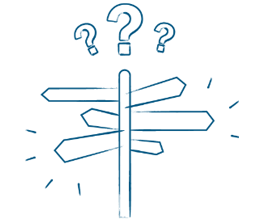
Welcome to Envisioning Potential Futures
(~5 minutes)
The purpose of this exercise is to give you practice in strategic foresight – anticipating how situations may evolve into the future.
Specifically, you will practice:
- Expanding your thinking beyond the present and/or near-term future
- Considering the long-term implications of current assumptions, decisions, and courses of action
- Thinking backward in time as a way to better anticipate how the situation may evolve into the future
- Thinking holistically and about multiple factors and their interactions as a way to anticipate potential second- and third-order effects.
What Is Strategic Foresight?
Strategic foresight is the skill of anticipating potential futures. It involves thinking across time – e.g., considering current and historical circumstances and envisioning potential future environments based on attention to military, economic, socio-cultural, technological, and political trends and interactions.
Why Does Strategic Foresight Matter?
Thinking in time and envisioning potential futures is essential for strategic thinking. It supports your ability to conceptualize possible strategies and initiatives you might pursue to shape how a current situation evolves into the future. This, in turn, allows you to set priorities and effectively allocate resources.
Listen to LTG (ret) H.R. McMaster discuss the importance of envisioning potential futures in the video below.

Reflect: Ambiguity and Strategic Foresight
(~5 minutes)
You must deal with some level of ambiguity in every area of your life. And while it would be extremely useful to be able to predict the future and avoid all negative outcomes entirely, that’s just not possible.
You can, however, use strategic foresight to help you anticipate, plan for, and even shape a variety of potential outcomes in a given situation. It requires a tolerance of ambiguity and an ability to deeply analyze a current situation to inform any future actions you might take.
Capture your ideas in the text field below. When you’ve finished answering the questions, click Finished. |
|---|
| Enter text here |

Now, listen to an expert’s perspective - or click "View Expert Response" - to learn about common challenges people face when using strategic foresight.
Common problems a person might encounter when attempting to use strategic foresight may include:
- Focus on the Present: Army leaders may find they are constantly dealing with immediate problems. Focusing heavily on the present and near-term future can leave limited opportunity to think about the long-term future.
- Holistic Thinking: The ability to anticipate potential future scenarios requires that we think holistically and consider multiple factors – such as political, military, environmental, economic, socio-cultural, religious, technological, and other factors – and how they might interact to affect future events. Though we have a framework to help us consider multiple factors (PMESEII-PT), it is often a challenge to “break the silos” and make connections across those factors.
- Overly optimistic: We tend to be overly optimistic in our predictions about future situations, particularly when we have personal involvement in those situations.
- Narrow Focus: We tend to refer to a limited number of information and personal sources to identify patterns and trends. This narrow focus can lead us to miss important trends and form incorrect interpretations.

Tips
(~2 minutes)
Use these tips to help you envision potential futures throughout this exercise. You can revisit them at any time.
You can enhance your ability to think into the future in the following ways:
- Think twice as far backward in time as you want to think forward (e.g., think back 10 years before the terrorist attack on 9/11/2001 and the factors that led to the event; then think forward five years to after the terrorist attack and the impact the event had globally). This will help you understand trends and cycles.
- Consider not only futures that are probable (i.e., more likely than not) but also futures that are possible.
- Recognize that what matters most in the present, and what mattered in the past is related to, but may not always be the major driver of future events.
- Consult a wide variety of sources (e.g., people of diverse backgrounds, diverse publications) to gather information about current events, patterns, and trends in a range of areas (e.g., politics, economics, technology, social issues).
- Consider the perspectives of the sources you are using, and how those perspectives might contribute to the information provided and the conclusions drawn.
- Recognize that whatever you come up with, you are likely to be off base. The point is not to figure out the right answer, but to appreciate a given situation more fully so you can effectively consider how it might evolve into the future.
- Assess not only what is currently occurring, but also imagine “wild cards” or disruptions that could dramatically change the course of events.
- Practice and reflection will enhance your ability to think forward in time in order to envision potential future states.

An Example of Strategic Foresight
(~3 minutes)
Listen to COL Jim Greer share an example of applying strategic foresight in the video below.
(Recorded in 2017)

Take Challenge 1: Understand the Present
(~20 minutes)
When envisioning potential futures, it is important to start with an understanding of the current situation.
Your Challenge Is This:
Take approximately 20 minutes and work independently.
Read through the scenario that you can access in the “Scenario” button below.
Scenario:
Maintaining the political and economic stability of the West African region that includes Liberia, Sierra Leone, and Guinea has been a strategic focus of the U.S. As neighboring countries, like Mali, grapple with terrorism and civil strife, preserving West Africa’s political and economic infrastructure is key to moderating factors that can lead to heightened violence and extremism. In the wake of the Ebola epidemic that infected 25,000 people, West Africa has experienced a cascade of political and economic impacts. Liberia has begun to show signs of recovery, after foreign aid agencies declared the country virus-free in May 2015. Sierra Leone and Guinea are recovering more slowly. Cases of Ebola in Guinea are continuing to emerge weekly, and there are continued concerns for cross-border transmission.
In the aftermath of the epidemic, the significant toll it took on public health services, food security, and the economies of all three West African countries has become evident. Steep reductions in trade and tourism have led to shrinking economies and increasing national deficits. The cascade of social, economic, and health effects associated with the epidemic are expected to continue for years, potentially undermining efforts to improve economic development and governance in the West African region.
The political and economic stability of the three West African countries is of particular concern as neighboring countries, notably Mali, struggle with terrorism and civil strife. Mali was regarded as a model of African democracy until the military seized power in March 2012 and the north fell under al-Qaeda control. Militant groups in Mali (including al-Qaeda in the Islamic Maghreb (AQIM), Ansar Dine, and the Movement for Unity and Jihad in West Africa) continue to assert territorial claims in the north as they attempt to establish a separate Islamic state. Militant groups have been gaining territory since a military coup in early 2012. The militant groups are undermining the government led by President Ibrahim Boubacar Keita since September 2013 and threaten to destabilize neighboring countries as well. French-led missions to combat the militants have driven some of their forces out of Mali, but others continue to maintain control of northern areas of the country.
Although the U.S. cut off much of its funding to Mali following the 2012 coup, it continues to provide some assistance through USAID. The U.S. has supported the French-led mission in Mali by establishing a drone base in neighboring Niger in March 2013, providing intelligence surveillance and reconnaissance to the French and other regional partners.
Continued destabilization of Mali could allow the militant organizations, including AQIM, to establish a safe haven in Mali and to use it as a base from which to further destabilize the region. Identifying ways to support sustained recovery of the social, political and economic infrastructure of West Africa is a central concern for the U.S., as it seeks to avoid the spread of extremism from Mali to its neighboring states.
Now that you’ve read through the scenario, respond to the following prompt in the text field below.
- Describe your understanding of the current situation or problem (in bullet points, paragraph form, or sketch). Consider stakeholders, their relationships, and any other features of the situation that strike you as important.
If you’d like some help with this challenge, click on Tip below.
As you develop your understanding, think about the range of factors that could be at play. Below is a set of factors that are often part of complex problems. Use this set of factors to help you think about the nature of the problems depicted in the scenario. You will likely recognize the factors listed below as those represented in the PMESII-PT framework, as described in FM 3-0. However, do not be limited by that framework or the factors listed here. Take care to consider not only the factors in isolation; consider their relationships and interactions as well.
| Social | Military | Infrastructure |
|---|---|---|
| Cultural | Religion | Physical environment |
| Economic | Technological | Time |
| Political | Informational | Key Stakeholders |
| Person of Influence |
|
Capture your description in the text field below or capture your sketch in a notebook and click Finished when you’re done. |
|---|
| Enter text here |

Thinking Backward in Time: How It Can Help You
(~3 minutes)
One of the techniques that can help you envision how a situation might unfold in the future is to reflect and think about how the situation got to where it is today.
Listen to Michèle Flournoy (Former Under Secretary of Defense for Policy) describe why it’s helpful to think back in time.

Take Challenge 2: Think Backward in Time
(~10 minutes)
You’ve learned that thinking backward in time can be helpful for envisioning how the future might unfold. It’s time to practice.
Your Challenge Is This:
Based on your current understanding of the scenario in Challenge 1, think back in time by five years. In other words, take that current situation and “rewind it” by five years. What did the situation look like at that point in time?
You can refer to your strategic foresight job aid to ensure you are considering multiple factors as you think about what the situation looked like five years ago.

|
Describe this situation’s conditions and relationships five years in the past in the text field below or in a notebook, using both words and sketches. |
|---|
| Enter text here |
It is likely that you do not have all the information you need or want to do this activity. That is okay. In fact, that is what often happens in the operational environment. The point of this exercise is to practice thinking in time, rather than to get the “right answer.” To address the lack of information and help you move forward, you may want to jot down the top three to five questions to which you would like answers. Then, construct answers to those questions, and note your assumptions. Use those assumptions as a basis for moving forward with the activity.
Click Finished when you are done with your description, sketch, and assumptions.

Challenge 3: Envision the Future
(~10 minutes)
By now, you’ve had the chance to think about a scenario and consider what might have happened in the past. Now it’s time to practice envisioning how the situation could unfold into the future.
Your Challenge Is This:
Assume again that we are in the present. Now, run the scenario forward in time and consider what the situation might look like two years out from the present. Use your analysis of the past (Challenge 2), including thoughts related to trends, that you captured in the text fields above or in your notebook to help inform potential outcomes in this scenario. Refer to your strategic foresight job aid to ensure you are considering multiple factors as you work this through.

You are going to generate two different future scenarios:
- First, think about a future scenario that is probable (i.e., highly likely). Jot down a few notes describing that scenario.
- Now, think about a future scenario that is possible. Write a brief description of the possible future situation. You can also sketch it if that helps you depict the situation. Later in this exercise, you will be presenting your possible future scenario to your peers.
|
Capture your ideas in the text field below. |
|---|
| Enter text here |

Hear from an expert
(~2 minutes)
Now that you’ve practiced envisioning how the situation might unfold into the future, listen to a tip from an expert. In the video below, COL Jim Greer describes how it can be helpful to think about disruptors when envisioning potential futures.
(Recorded in 2017)

Sharing Potential Futures with A Cohort
(~20 minutes)
You now have the opportunity to hear how your peers worked through this exercise in a group discussion. This exercise is recommended but optional.
Get together with your peers to share one of the potential futures you have envisioned for the scenario from Challenge 1. You may have all started with different scenarios, and that’s ok. So, start by describing your understanding of the situation described in the scenario. Then share a potential future you have envisioned.
After each person presents his/her potential future scenario to the group, consider and discuss the following.
- What assumptions did you make in developing your future scenarios? How were those assumptions different from the assumptions of others in this group?
- What do you see as the most significant factors that might influence the way the situation unfolds in the future? Why?
- What actions do you believe the U.S. could take to shape the future in a way consistent with your envisioned future?
- Now that you have discussed your considerations with others in your group, have you detected any blind spots you might have had when envisioning your possible future scenario(s)? What are they? How might you avoid those blind spots in the future?
When you’ve discussed the reflection questions with your group, click Finished.

Share Your Potential Futures
(~5 minutes)
Part of the value of these exercises is being able to leverage your peer community and learn from one another. To contribute to our learning community, capture your possible and probable futures for this scenario in the spaces below, then click Submit.
Possible Future |
|---|
| Enter text here |
Probable Future |
|---|
| Enter text here |

Final Reflection
(~5 minutes)
Now that you’ve worked through the Envisioning Potential Futures exercise, take a few minutes to reflect on the experience. Consider each of the following questions and capture your responses in the text field below.
|
|---|
| Enter text here |

Apply
(~10 minutes)
Now, it’s time to apply your strategic foresight skill in a new scenario.
Select a current situation in which you need to plan for the future. It could be personal or professional. Use the strategic foresight job aid [hyperlink] to walk you through the process of understanding the current situation, looking back to understand what led to the current state, and looking forward to envisioning potential futures. Then consider what actions you might take to shape the future.
When you are satisfied with your strategic foresight, share your thoughts with a peer, friend, or family member for a reaction. Take note of any additional insights or factors they identify.
After you’ve tried out this activity, click Finished.
Congratulations on completing the Envisioning Potential Futures exercise!
If you’d like to download and print your inputs in this exercise, click on Download My Work below.
Cultural Acuity
Welcome to Cultural Acuity Exercises
(~3 minutes)
These exercises will give you practice in interpreting contextual cues to make sense of unfamiliar environments.
What is Cultural Acuity?
Cultural Acuity is the ability to form accurate cross-cultural understanding and assessments through direct observations of a cultural environment. It includes the ability to:
- Effectively observe an unfamiliar environment.
- Interpret environmental cues.
- Develop a functional understanding of the environment.

Why does Cultural Acuity matter?
In cross-cultural settings, mission success requires Army leaders to understand and work effectively with individuals from cultural backgrounds other than their own. The ability to quickly and accurately learn about, interpret, and adapt to unfamiliar cultural environments and situations is a critical capability for succeeding in intercultural operational environments. For additional context, access the Mission Command CoE whitepaper on cultural competence or the Army Human Dimension Strategy 2015.
Cultural Acuity Supports Your Ability to:
- Assess important sociocultural aspects of unfamiliar environments.
- Develop culturally sensitive courses of action.
- Contribute to mission success in unfamiliar environments.
- Minimize negative, unintended consequences.
There are three exercises to practice cultural acuity skills: Unfamiliar Culture, Location Assessment, and Unfamiliar Sports.
Unfamiliar Culture

Welcome to Unfamiliar Culture
(~3 minutes)
This exercise will help you practice interpreting verbal and non-verbal behavioral cues to make sense of unfamiliar cultural environments. This practice will help you develop your cultural acuity skills, which are critical to working in complex operational environments.
What Is Cultural Acuity?

Cultural Acuity is the ability to form accurate cross-cultural understanding and assessments through direct observations of a cultural environment. It includes the ability to:
- Effectively observe an unfamiliar environment.
- Interpret environmental cues.
- Develop a functional understanding of the environment.
Why Does Cultural Acuity Matter?
In cross-cultural settings, mission success requires that you understand and work effectively with individuals from cultural backgrounds other than your own. The ability to quickly and accurately learn about, interpret, and adapt to unfamiliar cultural environments and situations is a critical capability for succeeding in intercultural operational environments. For additional context, access the Mission Command CoE whitepaper on cultural competence or the Army Human Dimension Strategy 2015.
Cultural Acuity Supports Your Ability To:
- Develop culturally sensitive courses of action.
- Minimize negative, unintended consequences.
When you are done reading, click Finished.

Reflect: what’s hard about making sense of unfamiliar cultures?
(~3 minutes)
Imagine that you just arrived at your new deployment. You are in a country you have never experienced before, and your knowledge of the local culture is limited. Within the first few days after arrival, you are asked to attend a key leader engagement with the heads of many ethnic groups in the region.
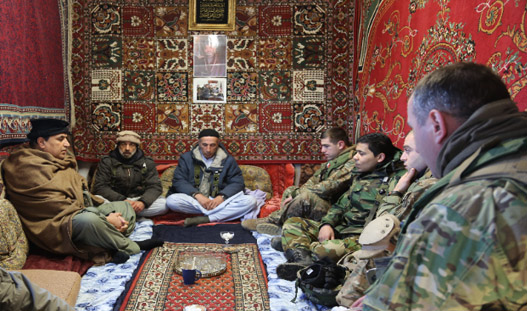
Take a moment to think about the questions below. Jot your thoughts down in your notebook.
- Assuming you are observing the key leader engagement, what do you expect you would be able to learn about the meeting participants, their roles, and their status?
- What do you think you’d be able to learn about their cultural norms, values, and beliefs?
- What would limit your ability to develop an understanding of the situation and the players?
- What would help you learn more about this group, their culture, and how best to interact with them?
When you are done with this reflection, click Finished.
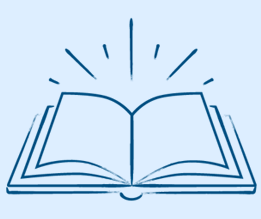
We grow up surrounded by culture – and the culture(s) that surround us during our life impact how we process and think about the world. Yet, we are often unaware of how culture impacts our way of thinking and acting.
Exposure to other cultures can help you recognize that individuals from other cultures do not think or act like you, and that your own mindset and behaviors are heavily influenced by the culture in which you live. Understanding your own cultural tendencies can help you develop better cultural acuity.

Making sense of unfamiliar cultural situations through direct observation is difficult. Observable behavior does not provide sufficient information to fully understand the underlying culture. Cultural researchers like to refer to the Iceberg Metaphor (see figure) to illustrate how the majority of culture is “under the surface” and inaccessible through direct observation.
While observable behavior is not sufficient to get the full picture, experience can help you improve your ability to interpret cultural situations and develop better and more useful working understandings of the people, situation, and culture at hand.

Cultural Norms, Beliefs, and Values
(~2 minutes)
Cultures are characterized by the values, beliefs, and norms that are shared by its members. When operating in a new culture, you can expect members of that culture to have values, beliefs, and norms that are different from your own. This does not mean that all individuals within a culture share the exact same values, beliefs, and norms. Just like in your own culture, individuals show some variability in their specific personal values, beliefs, and norms - as well as in how their behavior reflects them.
Achieving mission success often hinges on learning about the values, beliefs, and norms that underlie the behaviors of people with whom you will be interacting. For instance, when persuading a local leader to pursue a recommended course of action, it helps to understand why they hold their current beliefs, what they value most, and how best to communicate with them in a culturally sensitive manner.
In addition, it is important to pay attention to the formal and informal roles of individuals you interact with or need to persuade. You will not always know who everyone is and, even if you know their formal roles, you may be able to gather valuable information about the informal roles they play or status differences that can be useful for your operations in the region.
Learning to read cultural cues in unfamiliar cultures is an acquired skill. As with any skill, you can get better at it through practice.

Take the Challenge: Make Sense of an Unfamiliar Culture
(~4 minutes)
Your Commander has ordered you to attend a meeting in your region and report back on what you observe. The following video clips show a group of individuals in the region meeting to discuss and attempt to resolve a dispute among regional parties. Their culture will be unfamiliar to you because it is a fictional culture; it doesn’t exist in the real world.
Your Challenge Is This:
View the following video clip that captures the first scene of the meeting your commander has asked you to attend. Observe what they say and do to try to learn as much as you can about these three areas:
- Goals of the meeting
- The participants and their roles
- Culture values and norms of the meeting participants
Use your notebook to record your observations and thoughts for these three areas. Ultimately, you will need to report back to your Commander.
Play video clip 1 when you are ready to begin.

Reflect on Scene 1
(~3 minutes)
Take a moment to reflect on what you observed in Video Clip. Capture your responses to the following questions in your notebook:
- What are the key things that happened in scene 1?
- Starting from the person on the far left, what do you think is the role of each individual in the meeting?
- Which participants do you think have the highest or lowest status? Explain.
- What did you observe regarding greetings (i.e., how do members of this culture greet each other)? Explain.
When you’ve completed the reflection questions, click Finished.

Continue Making Sense of an Unfamiliar Culture: View Scene 2
(~3 minutes)
Typically, a single interaction with an unfamiliar culture isn’t enough to decipher a culture’s norms. It usually takes multiple observations and interactions over time to make sense of an unfamiliar culture and determine the cultural “rules” that govern behaviors and interactions.
Watch this next video clip that captures the second scene of the meeting your Commander asked you to attend. As you watch, build upon your initial observations in the same three key areas:
- Goals of the meeting
- The participants and their roles
- Culture values and norms of the meeting participants
Use your notebook to record your observations and thoughts.
Play video clip 2 when you are ready.
When you’ve completed viewing the video, click Finished.

Reflect on Scene 2
(~3 minutes)
Take a moment to reflect on what you saw in Scene 2 and answer the following questions.
- What are the key things that happened in Scene 2?
- Has your assessment of each individual’s role or status changed in any way? Describe.
- What cultural “rules” have you noticed?
When you’ve completed the reflection questions, click Finished.

Continue Learning About an Unfamiliar Culture: View Scene 3
(~2 minutes)
As you watched video clip 2, you likely picked up some additional cues about the unfamiliar culture. As you continue to observe, you will probably continue to learn more.
Take a look at a third video clip that captures the next scene of the meeting your Commander asked you to attend.
As you watch, continue to build upon your observations in the same three key areas:
- Goals of the meeting
- The participants and their roles
- Culture values and norms of the meeting participants
As before, use your notebook to record your observations and thoughts.
When you’ve completed viewing the video, click Finished.

Reflect on Scene 3
(~3 minutes)
Take a moment to reflect on what you saw in scene 3 and answer the following questions.
- What are the key things that happened in Scene 3?
- Has your assessment of each individual’s role or status changed in any way? Describe.
- How about greetings? Has anything you observed changed or complemented your understanding of how members of this culture greet each other? Describe.
- What additional cultural “rules” have you noticed?
When you’ve completed the reflection questions, click Finished.

Watch the Final Scene
(~2 minutes)
After watching the first few videos, you’re probably curious what will happen next in the meeting.
Take a look at the final video clip that captures the remaining portion of the meeting your Commander asked you attend. As you have during the previous three videos, build upon your observations in the same three key areas:
- Goals of the meeting
- The participants and their roles
- Culture values and norms of the meeting participants
As before, use your notebook to record your observations and thoughts.
When you’ve completed viewing the video, click Finished.

Brief Your Commander
(~3 minutes)
Your Commander wants to know what you learned in the meeting that you attended. It will inform her overall understanding of the operational environment and will influence how the U.S. operates in the region going forward.
Your Challenge Is This:
Describe in detail what you would brief your Commander about the meeting – including what happened, the individuals who participated, and the cultural norms you learned. As you prepare your brief, make use of your recorded observations regarding:
- Goals of the meeting
- The participants and their roles
- Culture values and norms of the meeting participants
Use the text fields below to submit your report.
| Goals of the meeting: |
|---|
| Enter text here |
|
The participants and their roles: |
|---|
| Enter text here |
|
The cultural norms you observed: |
|---|
| Enter text here |

Reflect on the Activity
(~5 minutes)
It’s time to reflect on the activity you just completed – watching all four scenes of the meeting. Capture your answers in your notebook.
As You Reflect on the Activity, Consider the Following:
- What was challenging about this activity? What seemed easy?
- How would you approach subsequent interactions with members of this culture?
- What information about these individuals or this culture would you like to have to improve your overall assessment? Is there anything you are uncertain about?
- What did you learn from this activity about assessing unfamiliar cultures?
When you’ve finished reflecting on your answers, click Finished.

Discover the Cultural Rules
(~3 minutes)
At this point, you are probably curious what the actual norms and rules of this fictional culture are. The document below summarizes the cultural characteristics and communication norms that actors in the video were asked to follow. As you will see, actors acted on these with varying degrees of consistency and by incorporating their own personal interpretations. This reflects how values, beliefs, norms, and behavior can vary substantially across individuals within the same culture.
Click Review Cultural Characteristics to review the cultural norms of the fictional culture in the video.

Reflect on Your Own Cultural Characteristics
(~5 minutes)
Your own personal values and beliefs are highly influenced by the culture in which you live. In this challenge, you will rate U.S. culture in a few cultural characteristics and reflect on how you think you personally compare to other members of U.S. culture in those characteristics.
Here’s Your Challenge:
Use the scales below to rate where you think U.S. culture would fall on each of the dimensions below, based on your own experience.
1. How much emphasis do U.S. nationals put on relationships?
Very low emphasis on relationships
Very high emphasis on relationships
2. How comfortable are U.S. nationals with uncertainty?
Very low tolerance for uncertainty
Very high tolerance for uncertainty
3. Do U.S. nationals place more value on past, present, or future event?
When you are done reflecting on the U.S. cultural characteristics and how they compare to your own personal views, click Finished.
|
Jot in your notebook a brief explanation for the following:
|
|---|
| Enter text here |
Apply
(~20 minutes)
Now It’s time to apply what you’ve learned in this exercise.
You do not need to be in a different country to experience different cultures. In fact, you don’t even need to experience a different culture to practice making sense of unfamiliar situations.
Here’s Your Challenge:
Go to a public place (e.g., park, street, station, library, restaurant, shopping center) in which you know there will be people naturally interacting with each other. Ideally, choose a place in a neighborhood or area in which you would expect to find people from cultural groups different from yours. Identify a small group of people who are interacting with each other and focus on them.
Take some notes (either in a notebook or mentally) on:
- What is the relationship among the members of the group?
- How are they communicating with each other? Do they have any unique communication norms that you can detect?
- If they are from a different cultural group, what can you learn about their culture from observing them? How does their culture compare to yours?
Once You’re Done Observing, Reflect:
How did considering the questions above impact your understanding of the situation?
Congratulations on completing the “Unfamiliar Culture” exercise!
If you’d like to download and print your inputs in this exercise, click on Download My Work below.
Unfamiliar Sports
Welcome to Unfamiliar Sports Exercises
(~29 minutes)
Overview: This exercise provides practice in observing and making sense of an unfamiliar activity.
Description: Participants watch a video showing two teams playing a real sport (Sepak takraw) that is most likely unfamiliar to participants. Their task is to figure out as much as they can about how the sport works (e.g. rules, scoring).
Note: Click the button below to try the Unfamiliar Sports exercise. Once you access the website, select the orange Demo Mode link located in the upper-right corner of the page, and then click the Sports Observation option to begin.
Location Assessment
Welcome to Location Assessment Exercises
(~25 minutes)
Overview: This exercise provides practice in “reading the environment” to correctly identify an unfamiliar location.
Description: Location Assessment is an interactive software-based exercise that uses geo-spatial technologies. Participants are virtually placed in an unidentified location. Their task is to determine where in the world they have been placed. The program includes scenes from locations around the world, shown from the participant’s perspective. Participants can control the interface to move around the location, look around, and zoom in or out to make sense of unfamiliar cultural setting through direct observation.
Note: Click the button below to try the Location Assessment exercise. Once you access the website, select the orange Demo Mode link located in the upper-right corner of the page, and then click the Location Assessment option to begin.
Sociocultural Systems Thinking Exercises
Welcome to Sociocultural Systems Thinking Exercises
(~3 minutes)
These exercises will give you practice in systems thinking to make sense of complex and culturally varied environments.
What is Sociocultural Systems Thinking (SCST)?
Sociocultural systems thinking focuses on:
- The sociocultural dynamics of operational environments
- The kinds of impacts that operational decisions and interactions may have on a sociocultural system
- The courses of action that are most likely to minimize negative, unintended outcomes
Why does Sociocultural Systems Thinking matter?
Managing complex problems requires that you, as an Army leader, extend your grasp of the operational environment beyond surface-level activities—for example, successful interactions with a few individuals or knowledge about the most obvious aspects of the local environment.
You need to be able to identify patterns and trends across sociocultural factors, determine key stakeholders, recognize and adapt to potentially surprising effects of their actions and detect emerging phenomena at various scales.
Systems thinking enables you to gain understanding.
It also impacts courses of action that stabilize an operational environment in an effective and sustainable manner. Deep understanding of the sociocultural system can help you:
- Develop more promising interventions.
- Learn from responses to an intervention.
- Manage the sociocultural system to move it toward the desired goal.
Sociocultural Systems Thinking Exercises
Six practical exercises (System Analyses of Real Events (SARE), Real-Time Event Analysis, In Flux, Analyzing Boundaries in Systems, Systems Thinking in Product Design, Simulations of Stakeholders in Sociocultural Systems (4S)) offer practice in sociocultural systems thinking.
What do the exercises involve?
The exercises use real-world case studies and examples. They include both small- and large-group interactions, discourse and feedback among peers, surprising cases that challenge learner’s assumptions, relatable topics or cases, and opportunities to repeat the exercises and practice.
They have been developed for classroom instruction or staff development. They each require a skilled facilitator who is knowledgeable about sociocultural issues and systems thinking.
What is included?
Each exercise link includes materials required to conduct the exercise, a facilitator guide, and an introduction to sociocultural systems thinking.
Systems Analyses of Real Events (SARE)
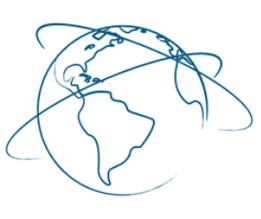
Welcome to Systems Analyses of Real Events
(~2 minutes)
Systems Analysis of Real Events (SARE) is a practical exercise that draws from real world events to highlight sociocultural systems concepts.
The goals of SARE are to:
- Encourage systems thinking.
- Promote new ways to think about complex events.
- Practice productive discourse.
NOTE: Throughout this exercise, you will have the opportunity to respond to questions by entering text directly into this site. By doing so, you will be able to download those responses for later reference. If you’d prefer to write your responses in a notebook, keep a notebook next to you while completing the exercise.
In SARE, you will become acquainted with real world issues by watching a video produced by VICE News. VICE News is a publicly accessible, online media platform that contains short documentaries about current events, such as political corruption, international drug markets, and environmental concerns. The videos will expose you to various complex issues around the world and the perspectives of involved stakeholders.
After watching the video, you will respond to prompts to help you critically think about the complex sociocultural issues portrayed.
The steps in this exercise can be reapplied to other VICE videos for more practice and to real- life events any time you want to deepen your understanding of a complex situation.
When you’re done reading, click Finished.

The Importance of Systems Thinking
(~3 minutes)
Like any skill, you can improve your ability to apply systems thinking to analyze real events through practice and a variety of experiences. Listen to COL Greer share why systems thinking is a critical skill for leader success.
(Recorded in 2017)
When you are done viewing the video, click Finished.

Take the challenge!
(~20 minutes)
You are tasked with analyzing the issues associated with relief and reconstruction efforts in Afghanistan.
From 2002 to 2015, the U.S. spent over $100 billion towards relief and reconstruction efforts in Afghanistan. Investigations by Special Inspector General for Afghanistan Reconstruction, John Sopko, have shown that a significant number of the funded projects turn out to be wasteful, useless, or lost to corruption and abuse.
Your challenge is this:
Watch the VICE episode Afghan Money Pit. In this episode, the reporting journalist, Shane Smith, sits down to talk with Mr. Sopko and explores some of the failed reconstruction efforts in Afghanistan.
As you view the video, you will answer prompts about four key factors in this situation. Input your notes about each of these four factors in the following table as you watch the video.
| Key Factor | Question to Consider | My Notes | |
|---|---|---|---|
| STAKEHOLDERS | Who are the key stakeholders (i.e., groups of people who are involved in and/or affected by the situation) in the Afghan reconstruction efforts? |
|
|
| HISTORICAL FACTORS | What historical factors lead to the current Afghanistan reconstruction efforts? |
|
|
| SECOND- AND THIRD-ORDER EFFECTS | Identify examples of both second- and third-order effects in the Afghanistan reconstruction efforts. |
|
|
| SYSTEMIC PROBLEMS TO ADDRESS | What systemic problems need to be addressed to tackle Afghanistan reconstruction efforts? |
|
Steps to complete this exercise:
- When you are ready to begin watching the VICE video Afghan Money Pit, click on the image below.
- Watch the video until the time stamp of 17:40, answering each prompt in the table above as you watch.
- When you are done answering the prompts, click Finished.
NOTE: If you leave this webpage, your responses will be lost.
You can print your responses for this exercise so you can return at any time to finish.
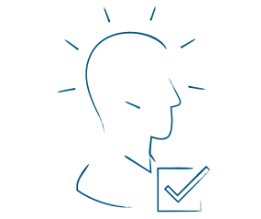
Take the challenge!
(~5 minutes)
There are a variety of approaches you can use to help you analyze systems. One of those approaches is visualizing the system you are analyzing with a diagram.
Diagrams can be useful to explore key stakeholders, relationships, and system dynamics. Click Diagram Examples to see diagrams used to visualize a system.
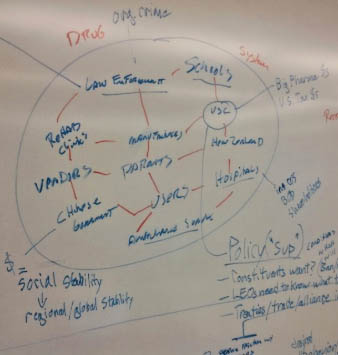
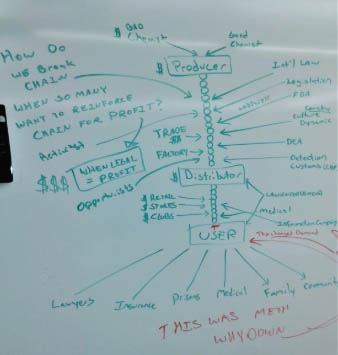
These examples depict systems described in the VICE video Synthetic Drugs. In this system, there are many stakeholders who are interrelated.
After reviewing these examples, reflect on the following questions. Record your answers in the text field below:
- What information can you determine from the diagrams about the systems they are depicting?
- What systemic problems might be resulting from the interactions and relationships between these stakeholders depicted in these drawings?
When you have recorded your answers, click Finished.
Key Stakeholder Analysis
(~10 minutes)
In the video Afghan Money Pit, there were several key stakeholder groups involved in or affected by the situation.
Use the notes you took about the key stakeholders to draw a diagram of the stakeholder groups in the Afghanistan reconstruction efforts. You’ll need a notebook or whiteboard for this. In your diagram, use shapes, connectors, text, symbols, and any other graphical means you choose to demonstrate how each group is connected to one another.
When you are done with your diagram, you can upload a picture of it to share with your peers. If you need help with this -
- Take a picture of your diagram using your cell phone.
- Email the image to your email account.
- Save the image to a folder on your computer.
- Use the upload button below to navigate to the folder where you saved the image and upload it.
Click Finished when you are done.

Reflecting on Key Stakeholders
(~5 minutes)
How did your analysis of the key stakeholders in the Afghan reconstruction compare to the analyses of your peers?
You can view your peers’ key stakeholder diagrams by clicking Peer Diagrams.
Once you’ve compared your diagram in your notebook to your peers’ diagrams, reflect on the following questions. Capture your responses in the text field below.
|
|---|
| Enter text here |
Click Finished when you are done with this reflection.
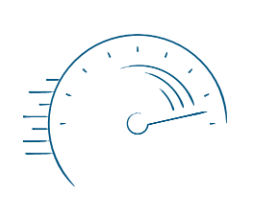
Historical Factors Analysis
(~10 minutes)
|
Thinking in time is a great way to understand a system’s pattern of change.
|
|---|
| Enter text here |

Second- and third-order Effects Analysis
(~10 minutes)
|
Complex systems can behave in counterintuitive ways and actions can sometimes have unexpected second- and third-order effects. Referring to your diagram and the notes you took during the video, describe some examples of second- and third-order intended and unintended consequences in the Afghanistan reconstruction efforts.
|
|---|
| Enter text here |
Solving Systemic Problems
(~5 minutes)
Complex systems generally do not have one problem to solve, but a multitude of interrelated problems. Using the diagram you drew and the notes you took as a reference, identify the top systemic problems that need to be addressed to tackle Afghanistan reconstruction efforts. Capture your ideas in the text box below, and click Submit when you are done.
Systemic Problems in Afghanistan |
|---|
| Enter text here |
Would you like to know what your peers thought about the systemic problems in this situation? Select Systemic Problems to Address to see what your peers had to say.
When you are done reviewing, click Finished.

Reflect As a Group
(~20 minutes)
Get together with your peer group to discuss the following prompt:
Imagine that you are tasked with developing an intervention to address the issues associated with the Afghanistan reconstruction efforts. Discuss ways to intervene and choose the intervention that, in your team’s opinion, has the most potential to succeed. Be prepared to defend your intervention.
Use the diagram and your notes about the Afghanistan reconstruction efforts to identify leverage points and design potential interventions.
Then, discuss the following questions as a group:
- Which intervention did your team determine to have the most potential? Why?
- What did you find difficult/challenging about this activity?
- What ideas for interventions did you find most innovative?
When you finish your discussion, click Finished.

Share Your Intervention Proposal
(~5 minutes)
|
Part of the value of these exercises is being able to leverage your peer community and learn from one another. To contribute to our learning community, capture the intervention you felt holds the most potential for the Afghanistan reconstruction effort in the text box below, then click Submit. |
|---|
| Enter text here |

Final Reflection
(~5 minutes)
Consider each of the following questions and capture your responses in your notebook or in the text field below.
|
|---|
| Enter text here |
When you are done with this final reflection, click Finished.
Apply: Systems Analysis
(~10 minutes)
Now, it’s time to apply what you’ve learned to analyze a system in which you are a key stakeholder.
Select a situation to analyze in which you are part of a system and the system has some problems to address. The situation could be work, family, school, or community related.
For example, you might be a solider on active duty in a challenging assignment where team members have not been communicating effectively or a parent at home with a family who refuses to pick up after themselves.
Draw a diagram of the situation in your notebook. Include the key stakeholders, their connections and relationships, and the system dynamics. Then, answer the following questions:
Capture your responses in your notebook or text field below. Then, share your thinking with a trusted peer, friend, family member, or mentor. Ask them to react to your intervention ideas and share any ideas that come to mind for them as well.
|
|---|
| Enter text here |
Real Time Events Analysis (RTEA)

Welcome to Real Time Events Analysis (RTEA)
(~3 minutes)
This exercise will give you practice applying a systems-thinking approach to better understand complex, real-world situations. It will also help you think about how real-world situations might develop over time and how your actions might influence them.
Why does systems thinking matter when it comes to understanding complex situations?
Applying a systems-thinking approach to understanding complex, real-world events is an important building block for becoming a strong strategic thinker. A systems-thinking approach directs your attention to the relationships among the stakeholders – and between stakeholders and the context that surrounds them.
Understanding these relationships is critical to grasping how the situation might develop moving forward and how your actions might impact it in the short- and long-term.
Developing an understanding of the situation and its inherent complexity will help you:
- Develop more effective courses of action
- Minimize surprises and unintended consequences
View this video by LTG (ret) H.R. McMaster on why systems thinking is so important for understanding complex problems:
(Recorded in 2017)
When you are done viewing the video, click Finished.

Reflect: What’s Hard About Understanding Complex, Real-World Situations?
(~5 minutes)
Take a moment to think about the questions below. Jot your thoughts down in the text field below.
|
|---|
| Enter text here |

Take the challenge
(~4 minutes)
Take a couple minutes to read the description of a real-world situation below.
Mass Incarceration & Crime Rate
While the number of people incarerated in the U.S. increased dramatically between 1970 and 2000, crime rates did not decrease proportionately. In fact, over most of this period, crime rates increased despite increases in incarceration. For example, between 1984 and 1991, incarceration rates went up by 65% and so did the crime rate, by 17%.
Moreover, while crime rate decreased nationally between 1991 and 1998, states with greater crime reduction also had lower rates of incarceration.
The graphic below illustrates the national-level findings.
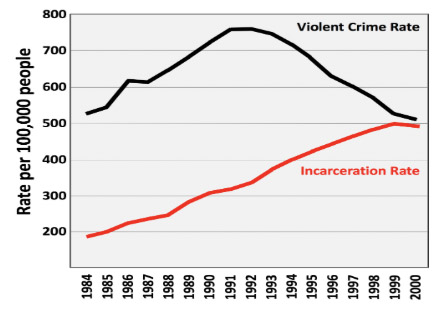
Why is a reduction in the number of criminals out on the street not matched by corresponding reductions in crime rates? Research suggests that the relationship between crime rates and incarceration is more complex than one might imagine. For example:
- People who commit the most serious crimes are incarcerated regardless, so increases in the incarceration rate are largely due to an increase in the number of lower-level criminals being incarcerated.
- During the years 1970 - 2000 the greatest increases in incarceration occured for drug offenders, many of them for low-level offenses.
- Drug markets are high-volume, demand-driven, and lucrative. Street-level dealers who are arrested and incarcerated are quickly replaced by new recruits.
- Mass incarceration disrupts families and communities, with particular consequences for children whose parents are incarcerated, including increased poverty, homelessness, poorer educational outcomes, and greater probability of engaging in criminal acts.
Your challenge is this:
In a notebook or on a whiteboard, draw a diagram of the major players involved in this situation and the connections they have with one and other. On your diagram, briefly describe the relationships among the players. (Note: feel free to include players not mentioned in the description above).
Want to see an example diagram?
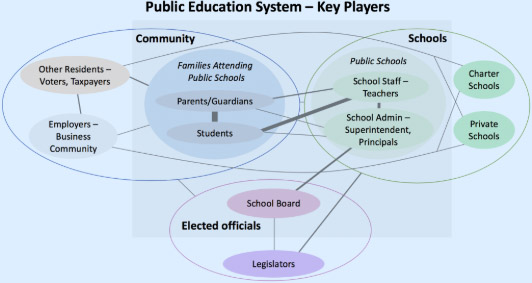
Note: This diagram reflects key players impacting the public education system, grouped into community members, schools, and elected officials. The gray square highlights players within the public-school system and the thickness of the lines represents the relative amount of interaction among the key players.

Think about Differing Perspectives
(~5 minutes)
When understanding a complex situation, it can be helpful to consider the perspectives of the different stakeholders. What are the other players trying to accomplish? What are their goals and motivations? What might account for their actions? Gaining insight into these issues can help make sense of a complex situation and determine potential ways of managing it.
Your Challenge Is:
Based on the situation you read, consider this question:
- What are the goals and motivations of the key players? in the text fields below:
| Key Player | Goals & Motivations | ||
|---|---|---|---|
| Prison Inmates | Inmates' goals include reasonable living conditions, safety, and fair treatment while imprisoned; reducing the duration of their prison sentence; preserving relationships with family/friends while in prison; reintegration after release from prison. | ||
|
|
||
|
|
||
|
|
||
|
|
||
|
|
Jot your responses to these questions in the text field below. |
|---|
| Enter text here |

Unintended Consequences
(~2 minutes)
Any decision or action can have both intended and unintended consequences. It’s common to think primarily about the immediate desired or intended effects. It can be more difficult (but very important) to consider the unintended consequences that may stem from our decisions and actions.
Unintended consequences often occur as second- or third-order effects of an individual’s or group’s actions. They play out in the “ripple effects" that stem from the initial set of actions, and sometimes have consequences far beyond the intended, immediate (first-order) effects.

Take the challenge
(~3 minutes)
|
Thinking about the scenario you read earlier, consider some of the possible unintended consequences of the decision made or action taken. Think beyond the initial intended impact or outcome and consider additional effects that could stem from the action.
|
|---|
| Enter text here |

Managing Complex Problems and Tradeoffs
(~2 minutes)
When making decisions about how to manage a complex problem, there is typically no single, ideal solution. After all, the situation is complex – with multiple people and factors at play.
When determining a course of action in a complex situation, it is not possible to maximize the outcome for all factors or key players simultaneously. There are always tradeoffs to consider.
To illustrate the concept of tradeoffs, consider a simple engineering problem: How might one build the safest, cheapest, and fastest automobile?
In reality, it isn’t possible to maximize the safety, cost, and speed of an automobile simultaneously. For example, safety and speed benefit from more expensive materials, but speed benefits from reducing weight, which can negatively impact safety.
While there is no single solution that will maximize all three factors, there are better and worse approaches to designing automobiles that are safe, affordable, and fast. When managing complex problems, you will be looking for interventions that can balance multiple conflicting goals rather than solutions that resolve all of them simultaneously.
When trying to manage a complex problem and determine courses of action to take, it’s important to be figure out where there are goal conflicts and the need for tradeoffs. Being explicit about them allows you to weigh your options.
When you are done reading, click Finished.

Take The Challenge: Consider The Tradeoffs
(~4 minutes)
|
Think about the situation you read about earlier. Consider the tradeoffs associated with actions described in that scenario. What are some of the benefits that could be realized, at the expense of something else?
|
|---|
| Enter text here |
Intervening In a Complex Situation
(~5 minutes)
When managing a complex problem, at some point you need to decide what to do. In some cases, the answer is to do nothing. In other cases, the answer is to take some action to manage the situation (or influence others to take action).
Your Challenge Is:
You have been asked to advise the U.S. government on how to develop a more effective approach to managing the problem described in the scenario.
As you think of potential interventions, consider the players and their relationships, their goals and motivations, potential unintended consequence of actions, and tradeoffs.
|
|---|
| Enter text here |
Interested in seeing what others have noted?

Seeking Additional Information
(~3 minutes)
When managing complex problems, you will often want additional information. Sometimes having the additional information can help you make a better decision about how to manage the problem. Other times, additional information suggests aspects of the complex problem set that you need to understand more fully.
Consider:
|
Based on the scenario you read earlier:
Capture your ideas in the text field below, then click Submit: |
|---|
| Enter text here |

Reflect
(~5 minutes)
It’s time to reflect on the activity you just completed. Capture your answers in the text field below.
As you reflect on the activity, consider the following:
|
|---|
| Enter text here |

Reflect as a group
(~10 minutes)
Get together with your peers. Reference the notes you’ve downloaded and share your responses to the various challenges within this exercise.
Then, reflect on and discuss the following questions as a group:
- What did you learn by listening to your peers’ responses? How did they differ from yours?
- Did you understand the situation or think about your responses differently after hearing others’ responses?
- How might you adjust your answer after reviewing the answers from other members of your group?
When you are done with the discussion, click Finished.

What’s challenging about understanding complex, real-world situations?
(~3 minutes)
Western education has trained us to think about complex, real-world situations by identifying the one or few components that are considered most critical. And when developing courses of action, we have been trained to focus on identifying the few “key” causes behind a problem that could be removed or otherwise addressed to eliminate the problem.
While this approach works well with simple or even moderately complicated systems (e.g., fixing a car), it overlooks important aspects of complex, real-world situations. The types of situations Soldiers face in operational environments involve human agents who have their own goals and motivations and who adapt to the actions of other players to advance their goals. The same intervention can have seemingly positive, expected effects in the short-term but have far worse negative consequences in the long-term.
Systems thinking highlights the importance of thinking about situations as complex, adaptive systems. It involves a focus on the relationships and dynamics among the components, not just the components themselves. Systems thinking identifies specific characteristics and processes of systems (e.g., multiple players, conflicting goals, historical factors) that should be considered when working to understand a complex system.
If you want to know more about understanding complex, real-world situations, click I want to learn more.
Try It Out
(~20 minutes)
Now It’s time to apply what you’ve learned in this exercise.
Think of a situation in your professional or personal life that involves multiple players and is complex. In your professional life, you might think about some aspect of an operational environment—for example, how to address government corruption, or how to reduce drug production in the region. You might also consider situations within your own organization or unit (e.g., how to enhance communication and sharing across units working within a region). In your personal life, you might think about situations such as improving relationships with family members or friends, or issues that affect the community in which you live.
Consider and draw (or jot some notes on):
- The situation or problem
- The players involved, their relationships, and their goals and motivations
- Potential actions that you (or others) could take to intervene
- Tradeoffs of taking certain actions
- Potential unintended consequences of taking a particular action
Did considering these factors change your understanding of the situation or how you might intervene to achieve the desired results?
After you’ve tried out this activity, click Finished.
Congratulations on completing the Real Time Events Analysis (RTEA) exercise!
If you’d like to download and print your inputs in this exercise, click on Download my work below.
If you'd like to practice these exercises with your unit, you can find printable pocket cards here along with a facilitator guide here.
In Flux
Welcome to In Flux
(~30-90 minutes)
Overview: In Flux uses an adaptation of the card game Rummy to demonstrate aspects of sociocultural systems thinking.
Description: In Flux employs a set of shifting goals, player perspectives, and circumstances overlaid on the card game Rummy. In Flux is designed to generate curiosity about fundamental SCST concepts and to introduce individuals to thinking in ways that may be less familiar or intuitive to them. There are three versions of In Flux, allowing a facilitator to gradually add learning objectives and to increase the challenge level of the game.
Challenge level: In Flux is a basic-level exercise intended to introduce participants to systems thinking concepts (“crawl” level).
Analyzing Boundaries in Systems
Welcome to Analyzing Boundaries in Systems
(~3 hours)
Overview: Analyzing Boundaries in Systems involves learning about real-world issues and events in the country of Colombia.
Description: Analyzing Boundaries in Systems is a group exercise that allows students to see the value of drawing boundaries within a sociocultural system, and the challenges of synthesizing subsets of the overall system into a holistic understanding of the larger sociocultural system. Participants study provided material, describe their understanding about what is taking place in the region, and propose potential ways to address various issues.
Challenge level: Analyzing Boundaries in Systems is meant to be one of the most advanced exercises in this effort (“walk” to “run” level).
Systems Thinking in Product Design
Welcome to Systems Thinking in Product Design
(~30-60 minutes)
Overview: Systems Thinking in Product Design involves a team competition to design and build a prototype car model.
Description: In Systems Thinking in Product Design, two to three teams compete to develop a winning car design in the face of evolving demands and limited information/feedback. Players are immersed in a system where they must balance multiple and often conflicting goals, missing or ambiguous information, and short timelines. The exercise contains multiple rounds, each of which presents new customer specifications. Participants must learn to adapt and revise their models rapidly and manage unexpected events and time delays as they compete to win a customer bid.
Challenge level: Systems Thinking in Product Design is a basic-level exercise intended to introduce systems thinking concepts in an engaging way (“crawl” level).
Simulations of Stakeholders in Sociocultural Systems
Welcome to Simulations of Stakeholders in Sociocultural Systems
(~60-90 minutes)
Overview: Simulations of Stakeholders in Sociocultural Systems (4S) draws on issues that surround poppy cultivation and the production of opium in Afghanistan.
Description: 4S places multiple participants in active roles in a multi-round simulation. Each role within the simulation has a defined set of specific goals and imperatives and interacts with other players through communications and exchanges of resources. Conditions change across rounds, forcing participants to challenge their preconceptions and adapt their strategies to new conditions that arise within the simulated system (e.g., resource limitations, other players’ shifting strategies). Participants experience how decisions and interactions among role-players impact the larger system.
Challenge level: 4S is a more advanced activity (“walk” level).

